A Locomotive Adventure
For this summer’s bike trip, we decided to go behind the Iron Curtain and bike along the Moldau River in the Czech Republic. Our plan was to take a train to the start point, and back from the endpoint. Doing so with a bicycle is challenging. The fastest trains, ICE, have very limited spaces, if at all. All our attempts at reserving a slot failed. That left us with using regional trains, the ones with the most stops. The route required 4 changes – at Würzburg, Nurenburg, Neumarkt, and Plattling, before finally arriving in Bayerisch Eisenstein. Four opportunities for German efficiency to break down. Four opportunities to fight our way into a train. We were soooo much looking forward to that 😉. For my American readers, let me describe the glamorous idea of traveling by train with a bike.
Bikes are only accepted in designated wagons. They will have a bike logo next to the door. The first and last cars of longer trains will almost always accept bikes, along with some wagons in between. Its anyone’s guess as to how many, and where they will be when it arrives in the station. That means that the bikers will usually crowd together at the front and back of the platform, prepared to stampede into the car to secure a space. Latecomers will take their chances somewhere in between, hoping to get near a designated wagon.
But, you are not only competing with other bikers, but also with mothers pushing strollers – and not the reasonable strollers, no, no. Mom’s of today prefer the SUV style of stroller, because you never know what kind of terrain you will have to push your baby over. As the train pulls into the platform and slows down, the herd of bikers and moms are closely watching for the bike logo – looks of concern are beginning to appear on some faces. Others are making split second decisions – “Should I chase after that bike wagon that just passed, or should I wait for the last one. Is anyone else chasing it?” If this sounds like an episode of Mutual of Omaha’s Wild Kingdom, or some National Geographic special then you have an accurate impression of the situation.
Now sometimes the train is early, and getting on is relatively easy. If one compartment is full, then you just walk to the next, until you find a space. But if not, then you have to fight your way in. To add a bit more drama to the mix, there are people with neither bike nor stroller claiming a seat in the bike compartments. Fortunately, Kathrin has no problem asking those people to go find a seat in the next compartment. Most of the time they obey.
Changing trains poses another set of challenges. Most, but not all, train stations in Germany are handicap accessible, meaning they have an elevator. So that Wild Kingdom scene of bikers and moms charging into a train moves to scene two, where they have to change trains. The smaller, migrant herd rushes to the single elevator in order to be first in line. These elevators move slow, as in sun dial slow, and they are just a few millimeters longer than your bike. (Seriously, who’s in charge of these designs!) If you are not one of the first five in line, then its faster to carry your bike down the stairs and back up at the new platform. In those cases, I would have to carry the bikes one at a time while Kathrin carried our bike bags.
Our journey started easily enough. We were early at the Frankfurt main train station so boarding was no problem. We didn’t have much competition and everyone found a space somewhere on the train. However, on our second leg of the trip, Würzburg to Nürnberg, we missed our planned train and had to wait for the next one. This put us 30 minutes behind schedule. As we came to a stop at the station, the National Geographic’s theme song was playing in my head as I waited for the doors to slowly opened. We rushed out and frantically searched for the elevator to get to the platform for our connection. Lucky for us, we didn’t need the elevator, our next train was arriving on the opposite side of the platform where we arrived. We just had to casually walk to the other side.
On the last leg of the journey, we had fewer competitors for bike space, which allowed us to relax a bit at the end. Finally, after 7 hours and 45 minutes, we stepped out of the train for the last time, in Bayerisch Eisenstein, our starting point.
Season two of this National Geographic series – “The Trip Home” was a 3-stage event with its own drama. We started in Dresden and were to change trains at Hof, and Bamberg, before arriving in Frankfurt. However, there was no room for us at Hof, the train only had 1 bike wagon and it was full when we approached it, so the conductor would not let us board. She turned out to be a nice woman, and found another train going to a small town called Lichtenfels, where we could catch a connection to Bamberg. The only downside was the Lichtenfels train left in 2 hours, but other than that it turned out to be fine, we made it on without problems.
At one point during the trip a woman was irritated to see so many bikes on the train (there were, perhaps, 4 bikes.) She started talking to the person next to her, in a loud voice, that people with 9 Euro Tickets are not allowed to bring bikes. Something should be done about this. My first thought was, “If you don’t have a bike, then don’t sit here, find a seat in the next car.” I kept that thought to myself. We just quietly sat in our seats and let her stew in her anger.
Our Route
All credit for this memorable bike tour goes to Kathrin. She spent days studying a guidebook called Bikeline. She planned the route, marked noteworthy points of interest, even put markers in the book and added them to the gps track for easy reference on the road.
A few notes about the route before I dive into the fun stuff:
Our longest day, from Zvikov to Davle, was 90 grueling kilometers (56 miles for you Americans.) We didn’t plan it that way, we wanted to stop sooner, but a lack of accommodation forced us to keep going. Our shortest day, Davle to Prague, was 30 kilometers (19 miles), also not planned, it was the other side of the coin from the extension the day before. The most strenuous day was our first day, from Bayerisch Eisenstein to Bucina, the route had over 1,650 meters of elevation change, 1051m up and 605m down. We put our batteries to the test that day!

By the time we reached our final destination, Dresden, we had travelled 701km (435 miles), with 4.8km (3 miles) of total ascent. Not for the faint of heart, but with a second battery we were able to git’r done. We never ran out of juice.
Unlike all our previous trips, this time we decided to play loose and fast. We didn’t reserve any hotels before we left Frankfurt, with the exception of Bayerisch Eisenstein, our starting point. After that we had a general target for each day, but we wanted the flexibility to stop sooner, or later, depending on the terrain, the sightseeing, and how we were feeling. That being said, what Kathrin planned per day turned out to be accurate, so we didn’t have any surprises, with one exception: Slapy, that wasa ghost town (more in that story later.)
Behind the Iron Curtain
We began our bike journey in Bayerisch Eisenstein. By the way, when we stepped off the train the day before, we took perhaps 10 steps, and crossed “the border” into the Czech Republic. The town isn’t on the border, the border is on the town! We had to take a selfie here.
Over the course of our first day, we biked through the beautiful Bohemian Forest. On the Czech side of the border, it is designated as the Sumava National Park, and the German side is called the Bavarian National Forest. When we were not huffing and puffing during the uphill battle, I occasionally looked around to admire the view. It was noticeably healthier looking and more beautiful than Frankfurt’s City Forest. Green meadows were scattered amongst lush green trees.
Just at the point where our bodies’ “low fuel warning light” turned on, we arrived at the Hotel Alpská Vyhlídka. There was a large terrace with a fast food “imbiss” where Kathrin took a seat while I went inside to inquire about a vacancy. Lucky for me, the woman at the reception was able to speak enough German for us to communicate and we got a room. If you imagine a typical Bavarian hotel, with wood beam ceilings, a generous use of stained wood siding and pots of red flowers under the windows, then you will have a good picture of this hotel. It is, after all, just a stone’s throw away from Bavaria.
It is also 500 meters away from the former Iron Curtain. In the beginning of those days the village, Bucina, had about 50 houses, including our hotel, known as Hotel Peschl back then. However, as the security zone along the curtain was built up most of the houses were destroyed. The only survivor of those days was our hotel which is surrounded by beautiful forest and distant mountain views.
For history buffs, a replica of the Iron Curtain is only a few steps from the hotel. It was saddening to read about the oppressive conditions people lived under.
Today we were expecting to be rewarded for making the long uphill trek yesterday. But the route was not a bed of roses, at least not entirely. There were several stretches of washed-out trails, eroded pavement, and other tricky surfaces that demanded our attention, rather than enjoy the scenery. We didn’t have any accidents, but we put 3 weeks’ worth of wear on our brake pads!
Once down at lake level we were rewarded with a ferry ride to reach the town. It was a nice way to make our entrance, and a pleasant change from the downhill slalom course.
Our second night was at a resort town called Lipno, situated on the banks of a man-made lake by the same name. It’s known as the Czech Riviera, the place for water sports in the summer time, and for skiing in winter. Our hotel, Hotel Element even had a ski lift.
I walked into the hotel and told the reception clerk that I had a reservation.
“Ah yes, Mr. Kelley, we have your reservation…which you made 10 minutes ago.”
“I prefer not to plan too far ahead. You never know what the day might bring.”
“Would you like a cookie while you wait?”
She had me with cookie. I decided this was a good choice. Seeing our room confirmed it. This was, indeed, a nice hotel. We walked down to the harbor for dinner and enjoyed a nice meal with a great view. We were so glad we decided to stay in Lipno.
Day 3 offered our first castle sighting, Rožmberk castle in the tiny town of Rožmberk nad Vltavou (aka, Rosemberg on the Moldau.) After nine years in Germany, quite a few sights have become normal, even mundane, but the sight of a castle is still exciting. My anticipation grew as we approached the site. It’s a beautifully restored and maintained castle and we were really impressed by it, but the first tour wasn’t for another hour, so we admired the courtyard and exterior views.
Over the course of the day, we saw more and more people rafting down the river. At noon, right when our stomachs started to give signs of hunger, we rode by a boat camp that offered a small lunch menu. Their lentil soup looked too good to pass up, so we got two bowls. With a hearty, high energy meal in our bellies we continued the journey to Český Krumlov, an ancient town with a castle and large church. This centuries old town is full of impressive sites. First and foremost, the historic center and castle complex, which is a UNESCO World Heritage Site.
It was fascinating exploring this lovely town. But I eventually noticed something – it’s all fake, like a Walt Disney World resort. There’s the Hotel Merlin, Hotel Leonardo, Café Mona Lisa. Many building façades are painted on and not authentic. Even the castle’s exterior walls are painted with stone outlines. Nevertheless, we really enjoyed seeing all of its splendor – regardless of how authentic it might be today. One interesting thing about this castle – it is relatively unique in that it is surrounded by a moat filled not with water, but with bears, even to this day. We were a bit disappointed to see these bears being held captive for no good reason in this day and age.
As I was walking around town in the late evening, hunting for photos during the golden and blue hour, I came across a corner where a 3-piece band was playing local folk/country music with the castle in the background. It was a nice way to finish the day.
The morning greeted us with rain. But this time we were ready for it and had our wet weather gear on. At least it wasn’t pouring down, just a light, steady sprinkle. At mid-morning we stopped at a monastery for a short look around and a geocache. The Holy Crown of Thorns Cistercian Monastery, founded in 1263.
Our visit to the monastery was short, we didn’t want to slog around in our wet rain clothes so we had a look at the area open to the public, admired the place, then got back on our bikes and continued on to Budweis. As we entered the town, we saw a sign for a bike friendly hotel and inquired about vacancies. Sure enough, a room was ready and waiting for us. It’s amazing how things work out! By the time we settled into the room the rain had stopped, as if to welcome us to the town and all its sites.
The town of České Budějovice, better known by its German name, Budweis, is well worth a weekend visit. Not that we did that, our schedule allowed for one day before moving on, but trust me, if you come here stay longer. The first place we came to was the Premysla Otakara II square, named after the founder of the city. A huge (2.5 acre) open place for people to relax, chill out, and kids to play in the squirting fountains. What really stands out are the 48 Baroque and Renaissance townhouses with porticoed arcades along the perimeter. All the houses, except the town hall, used to belong to the wealthiest citizens and nobility. Since the founding of the town, this was the place for festivals, markets, and executions. The exact location of the execution place is marked by the so-called Lost Rock, the sole survivor of the original pavement. Legend has it that if you step over this rock inadvertently after 10pm, you won’t find your way home until morning and will have to wander the city streets.
An ornate yellow building in one corner really captured my attention. It’s called Palác Včela and is an architectural pearl. It was the seat of the German credit and mortgage association Biene, which is where its name, “Biene Palace”, which in Czech is Palác Včela, comes from.
We then climbed to the top of the Black Tower, all 225 steps of it. Built in the 16th century as a watch and belltower, today it serves the St. Nicholas Church across the street. At 72 meters, it’s a great place to get a bird’s eye view of the town square and surrounding areas.
Budweis, like Czesky Krumlov, is a beautiful town drenched in old-world charm that is typical of this area. It’s nice just walking around and admiring the street views and corners.
I had a nice surprise during my evening photo walk. I strolled to Piarist Square, home to the former Dominican Monastery, and a popular spot for local musicians. The night I was there a guy was playing guitar and singing some songs. I admired the scene, listened to a song or two, then continued my walk. Passing around to the other side of the monastery I came to the river and walked along the back side of the compound, and immediately noticed another concert. This one was a big production, part of a multi-day music festival. The stage was on the river and there was a guy singing with a band and backup singers (Think Frank Sinatra, or Michael Bublé). He seemed to be very popular by the size of the audience on the riverbanks and bridge. Once again, I mingled among the crowd, admired the setting, listened to a few songs, then made my way back to the hotel. I really love finding these unexpected surprises. It’s an added bonus to my photo walks and I really feel like I’ve discovered something.
We left Budweis at 8:30am and rode 14km (8.7 miles) to Hluboká Castle, a spectacular chateau in Hluboká nad Vltavou. It is considered one of the most beautiful castles in the Czech Republic. It began life in the second half of the 13th century as a humble Gothic castle. The Schwarzenberg family obtained the property in 1661 and, over the course of its history oversaw several renovations, until, in the 19th century, Johann Adolf II von Schwarzenberg ordered its reconstruction in the romantic style of England’s Windsor Castle.
The Schwarzenbergs lived there until 1939, when the last of the family fled oversees to escape Nazi persecution.
It was an impressive sight, and the English influence is apparent. This was one of the most impressive castles we have seen outside of France. It made me wish I had a drone to capture it in a fly-over video.
Afterwards we continued another challenging, hilly 46 km (28.6 miles) to Zvikov, home to another castle, Castle Zvikov. But something else caught our eye that was more important, the sign for the Hotel Zvikov. We got their last room. The man at the reception desk let a young teenage boy, Richard, check us in since he spoke good English. As international guests, there is a special procedure which he wasn’t trained on, so it took a while and gave us the opportunity to chit-chat a bit. Turns out he learned English at the British school he attends in Spain. He also learned Spanish and French. His dad owned a hotel in Prague but sold it a couple of years ago. Later he heard about this hotel in Zvikov and bought it.
After we settled into our room and had dinner, we headed to the castle. The original construction, around 1250AD, included a royal palace and surrounding fortifications. Like so many of the castles we visited, it eventually came into the possession of the Rožmberk family. Also of note, until Karlstejn Castle was completed, Zvikov served as the sanctuary for the Bohemian Crown Jewels.
This castle had a different look about it. The previous two had a look of royalty to them. This one seemed more like a knight’s castle. It lacked the regal impressiveness the others had. I’m not saying its bad, just a noticeable difference.
Today was mostly a riding day, although we didn’t start off on our bikes. We began the day’s travels on a boat. We boarded at Zvikov Castle perched at the southern end of the reservoir, meaning that after the other passengers casually made their way down the 20 or so steps to the pier, I first schlepped my bike, then Kathrin’s, down the staircase, then handed them to a couple of boat hands who set them on the deck. We then chose a table offering a prime view of the lake shore and, 50 minutes and a rain shower later we disembarked at Orlik Castle, Zvikov Castle’s, bigger sister, overlooking the northern end. We had a look around, found the geocache here, then mounted our bikes.
Turns out this day was our worst regarding accommodations. We planned on stopping in Slapy (pronounced “sloppy) and found a hotel right as we entered, yay, but wait – it was closed. So we pedaled up the road to visit the church first. Riding through it we noticed that the whole place was dead. I don’t mean boring; it was practically a ghost town. We asked someone about a hotel in town, but she said there isn’t one, we should go to the next village. Ok, fine, but this was also a dud, so we went another 5km further, to the next village, Davle. There we found a small pension. As I walked to the restaurant/bar area in the back, I got the feeling of a seedy Texas bar, with a pool table in the back of the room, lights dimmed a bit. I have to say, though, that the woman behind the bar, and her husband, were very friendly and also glad to have some customers. They gladly offered us a room. We were desperate enough that I didn’t think twice about taking a room. It wasn’t the best place we stayed in, but we have a roof over our heads for the night.
We planned on 2 nights in Prague, and to make up for last night’s accommodations, I reserved a room at a more expensive place, the Hotel Caesar. Since I am a genius member on Booking.com, level 2 even, they upgraded us to a Superior Room.
I’m not going to go into the details of this part of our trip here, as the city deserves its own blog post, so stay tuned. However, I will say that Prague is a big, beautiful city. I would compare it with Paris as far as architecture and history goes. Like Paris, it suffered little to no destruction during World War 2. One thing I will mention, is a surprise discovery of Darth Vader’s real-life model, the Iron Knight. And how did we come across this statue and its history? Through a geocache of course!
There is a statue that stands in front of Prague’s City Hall. It depicts Jáchym Berka, a medieval knight who, according to legend, was betrothed to a beautiful young woman he fell in love with while her blacksmith father was working on Berka’s armor.
While off fighting in another country, Berka heard malicious rumors of his fiancé’s infidelity. Stories differ on the circumstances, but the most dramatic version seems to be that, upon his return, he killed his fiancé in a jealous rage. Heartbroken, she cursed him with her last breath, and the knight immediately turned to stone. The Iron Knight was doomed to walk the streets of Prague every 100 years, looking for redemption which can only be provided by a virtuous maiden’s kiss.
George Lucas was so impressed with the story, and the statue, that he modelled Darth Vader after him.

Oh, I will mention one more thing. Walking back to the hotel after my first evening photo walk, I stumbled across a jazz club, The Jazz Republic. I walked down (it’s in the basement) to get an impression of the music, but unfortunately the band was at the end of their final song. I didn’t take any chances on the second night and made a reservation for the following night to listen to the Jaroslav Sindler quartet. The music and the atmosphere came together to make for a really nice evening.
We said goodbye to Prague on a cold, windy, overcast morning.
The route started of beautifully. We were riding through a forest on a nice gravel path running parallel to a railroad track. Eventually our navigation had us leave this lovely natural area and navigate through a construction site. Hold on, we stopped and assessed the situation. It was a Sunday, so no one was working, but we didn’t like the look of it. We came up with an alternate plan – ride through the open field, cross the road, and continue on. A few meters into the field and that plan went out the window. The ground was so soaked with water that our tires sunk into the earth. There was no crossing this. So we slugged our way back to the trail and decided to risk riding through the construction site. Turns out it was no big deal at all. The path was fine and after a couple of minutes we were through and back on our route.
With that messy bit behind us we continued on until we reached Nelahozeves Castle. This was a unique castle. At first sight it looked like a black-and-white building. Turns out its an architectural technique called “sgraffito decorations”, where a top layer of color is etched off to expose the white plaster beneath. It was really an eye-catcher. The courtyard was also really big, and the emptiness magnified the feeling of expansiveness. The castle eventually ended up in the hands of the Lobkowicz family. I’ve never heard of them before but they seemed to be very influential. What impressed me was the story of the 7th Prince Lobkowicz, being a talented musician himself, he was a life-long patron of Beethoven. Beethoven even dedicated his 3rd, 5th, and 6th symphonies to the prince.
Continuing on, we next came to the 18th century Veltrusy Chateau, a beautiful compound sitting in the middle of a park. It looked like it was taken from the Italian countryside. We arrived at the same time as a bike touring group, who immediately dismounted and wandered around the chateau grounds. We were here to do the same so we wandered around ourselves. They were quickly bored and moved on (perhaps it was more of a potty break) which gave me the opportunity to take a couple of photos.

The Moldau River empties into the Elbe at a town called Mělník. It is here that we ended our ride for the day. After Prague’s big-city hustle and bustle, this little corner of the Czech Republic offered small town, quiet charm.
Even as we approached the town it made a good impression, as the chateau sits above the river. We stopped at an old Lock to admire the view – and get a geocache.
The town is over 740 years old and its elegant architecture bespeaks of its quasi-noble past. Duchess Emma, the second wife of Boleslav II, took up residence here and as a result, Mělník became a royal dowry town, whereupon it was passed on to various queens and duchesses by their king husbands.
This was the first place we came across that showed any signs of wine making. The Czech Republic is known for its beer. But here in Mělník, wine is king. Viticulture dates back to the 9th century, but winegrowing got its big boost when Charles IV brought vines from Burgundy here. They’ve been going at it ever since. The vineyards sit at the feet of the majestic chateau, and it is here that the town’s wine is on display. The courtyard was being prepared for some kind of event, so we didn’t want to get in the way of the work, but we still had a quick look around and visited their wine/gift shop.
We had 65km to go to our next destination. At lunchtime we were hoping to find an inviting place along the Elbe to stop and eat. Not 10 minutes later, at the village of Treboutice, “Wake and Fun” appeared. It’s a water sports center with a small outdoor restaurant. Just the thing we were hoping for! The proprietor spoke English and was able to translate the menu board for us. We couldn’t believe our luck in finding such a nice place along the river.
Afterwards we took a 10 km detour to confront ourselves again with the dark history of Germany during WW II and visit Terezín, aka Theresienstadt, a former military fortress composed of a citadel and adjacent walled garrison town.
It started off innocently enough. The Hapsburg emperor Joseph II ordered the construction of a fortress north of Prague, to defend the bridges across the Ohre and Elbe rivers against Prussian troops. 10 years later there was the small fortress, the main one, and a citadel.
Over the years the fortress was used as a prison, then the Gestapo held POW’s and enemies of the state there. It was later used as a ghetto for Jews and a concentration camp, but not an extermination camp. Although thousands died, it was due to disease and malnutrition.
The most shocking aspect for us is that it is still a living city. I don’t know if I could do that, with its horrific past. Seems like the perfect set up for a horror story. If there was ever a place for ghosts to hide, this is it.
The town center was nice, however some buildings are still undergoing reconstruction, while others are still waiting their turn. From there we visited some of the tunnels, the Jewish cemetery, and other places. It is always so sad to be confronted with this terrible history.
For a glimpse inside the bastion walls, head over to my flickr page.
At the end of the day we reached Litomerice, or Leitmeritz in Czech, it is the complete opposite of Terezin, the seat of the Roman Catholic Diocese of Litomerice, and one of 3 still existing in the Czech Republic. I wandered through the streets of the town during the evening, looking for a good vantage point to photograph the cathedral, when I stumbled across the town’s ancient walls. It was a popular place for young people to hang out, and offered a great view of the cathedral. I was once again pleasantly surprised with my luck during my evening walks. The next morning, I played tour guide for Kathrin, leading her to this great view.
Leaving Litomerice, we made a stop at Schreckenstein Castle, or as the locals call it, Strekov Castle, a well-preserved castle ruin outside the town of Usti. Back in the day, the Elbe was an important trade route to Germany and this castle was meant to protect it and, perhaps more importantly, collect tolls. We decided to pay the admission and tour the site. It was nice walking around the various “rooms”, or what’s left of them, and the views were great. In fact, the views from the castle attracted the likes of Goethe and Richard Wagner. Afterwards we decided to enjoy lunch here and admire the views of the valley below.
Our next stop was another castle, in a town called Usti, that Kathrin found in the guidebook. We arrived in town and after a bit of wandering around, found the entrance to the cable car that takes visitors to the castle. To our great disappointment this place was just a hotel, modeled to look like a castle. We were so disappointed that we took the next cable car down.
Our last night in the Czech Republic was in Děčín, at the confluence of the Elbe and Ploucnice rivers. It also lies at the transition to the Bohemian Switzerland, the Czech designation for the Elbe Sandstone Mountains.
Děčín is also home to a castle, Zámek Děčín. A huge fortress overlooking the Elbe River from a rock hill base. There are two routes to reach it, a winding one that leads you up the side of the rock base, or you can take the “Long Drive”, a high-walled road leading from a town square to the courtyard in front of the main entrance. One of the unique features of this castle, other than the wooden knight standing guard at the entrance, are the peacocks wandering around the grounds. This was really an impressive site, even more so from across the river, where I went for my evening photo walk. In fact, Frederick Chopin wrote his Děčín Waltz during his visit here.
Crossing back into Germany

By 8:30 the next day we had crossed the border into Germany. As we rode through small towns and villages, I was struck with the feeling of being home, in familiar territory. I would say to myself, “Hey I know what that sign says. Hey, I know what they are saying!”
It was a nice feeling.
It was a pleasant leisurely ride through the Sächsische Schweiz, or Saxon Switzerland, where we enjoyed the views of villages sandwiched between the river and the sandstone cliffs in long, finger-like stretches. Real estate is certainly at a premium here!
At mid-morning We made a stop at the Bastei and the famous Basteibrücke. This is arguably the most famous tourist destination in the area. We couldn’t just ride past; we had to stop and see it for ourselves. We parked the bikes and took a ferry across the river to the village on the other side. The ferry driver was a bit impatient to get going as, according to him, a ship was approaching and would mean a delay in his schedule. We were packed in with a hundred or so of our closest friends, when the captain set off for the other side. There was a decent amount of people making the moderate jaunt up to the top, including some senior citizens (good on ya’ mates.) As we approached the Basteibrücke we saw a building, what we guessed was a restaurant, perched atop one of the rock formations beyond the bridge. We didn’t go, we walked across the bridge and to a lookout point with a nice view of the bridge and surrounding rock formations. We were so impressed that we decided to come back and enjoy all that this beautiful area has to offer.
(Side Note: We learned from Leon that the building we saw was indeed a hotel/restaurant. You can drive up there and have an easy walk down to the bridge.)
Our trip ended in Dresden. As we rode into town, seeing the mansions along the river, memories of our first visit with Mom and Jim came back. Dresden was as nice the second time around. We celebrated the end of the trip with some friends who live here. After visiting a street festival, we had a superb dinner together, and caught up on each other’s lives. It was a very nice evening but finally we had to say goodbye, and went back to our hotel, the Pullman Dresden Newa. This was by far the nicest hotel of our trip. The floor-to-ceiling windows offered a panoramic view of the main train station and square below. You can even admire the view from the glass walled shower in the middle of the room, tucked between the bedroom and bathroom. It was a wonderful end to a great trip.
Ready for more adventures? Find another one here
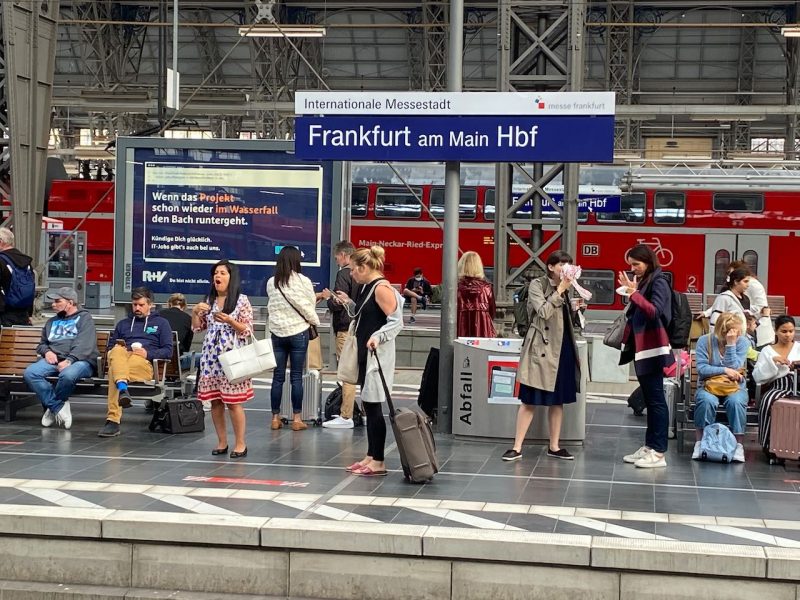
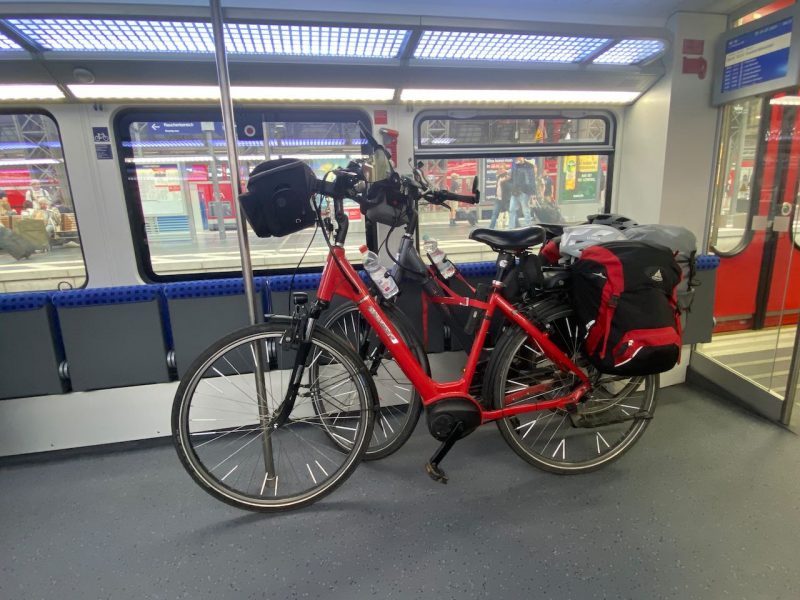
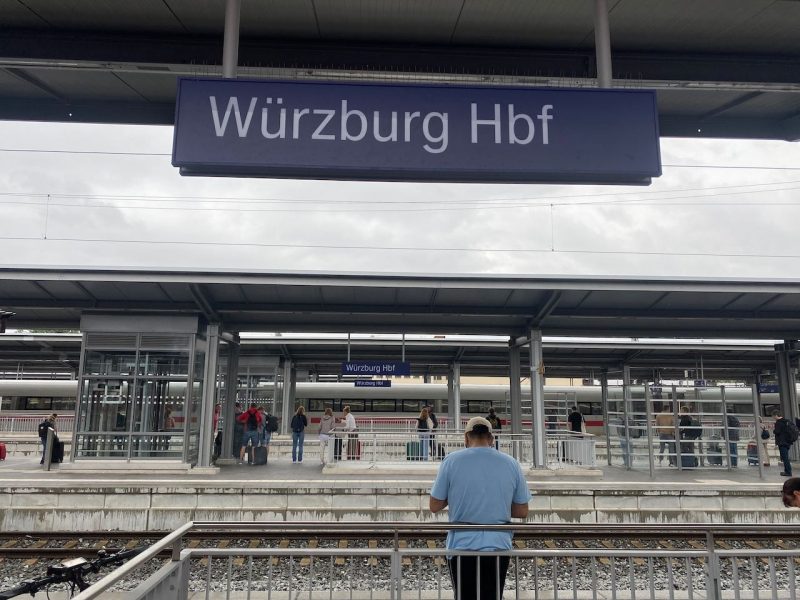
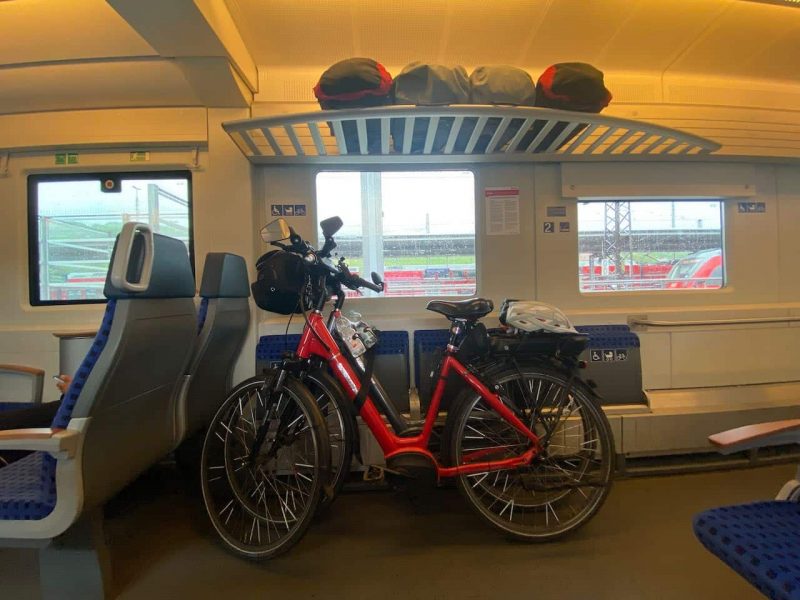

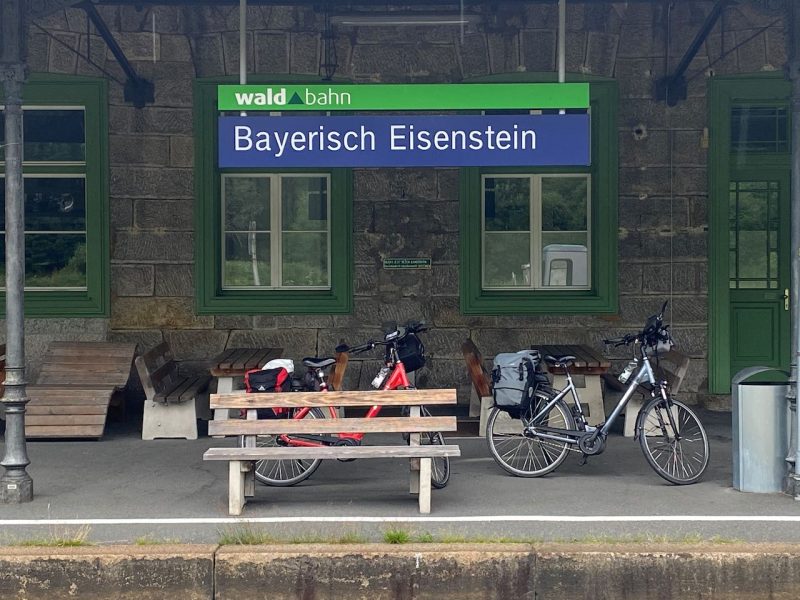
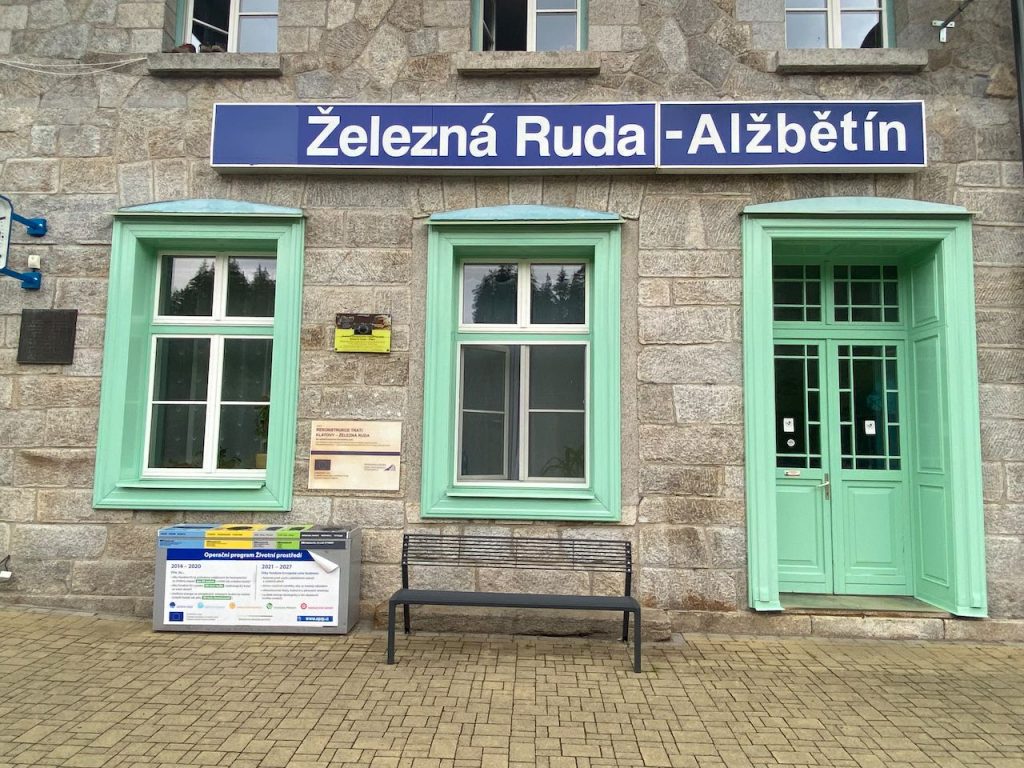
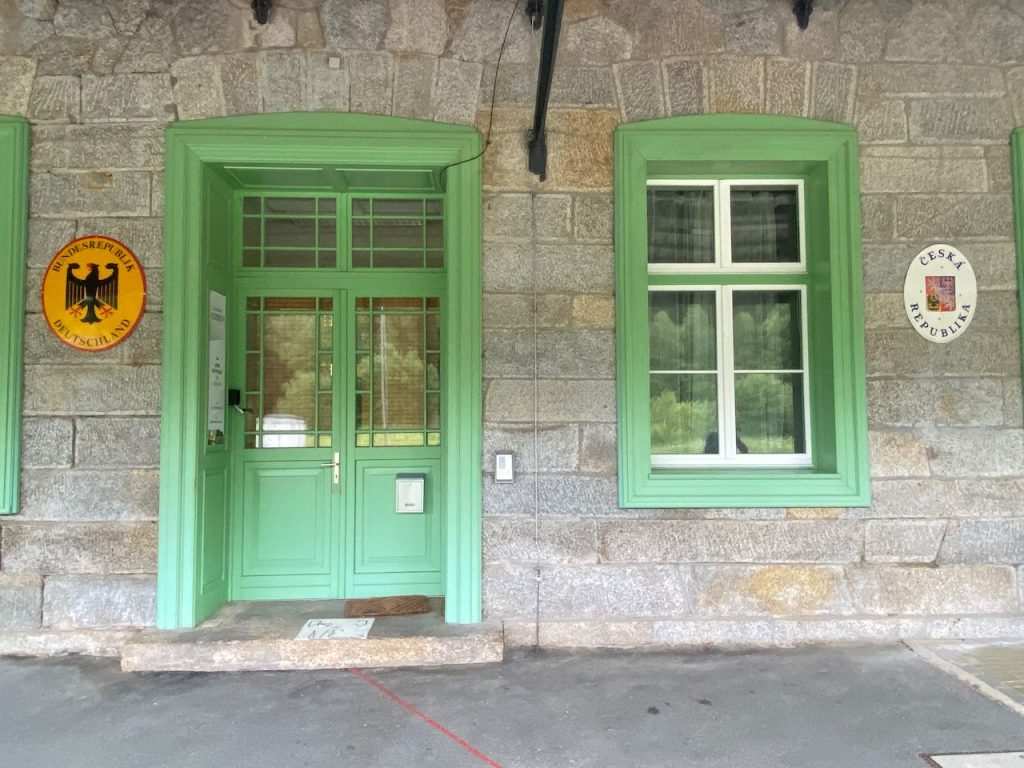

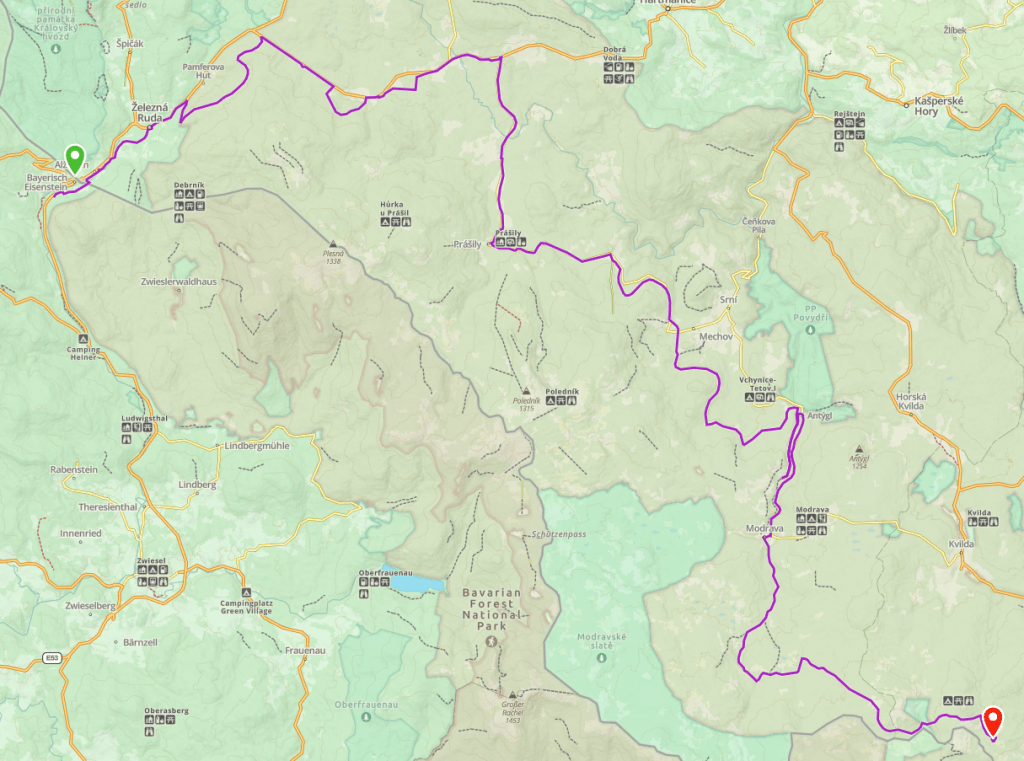

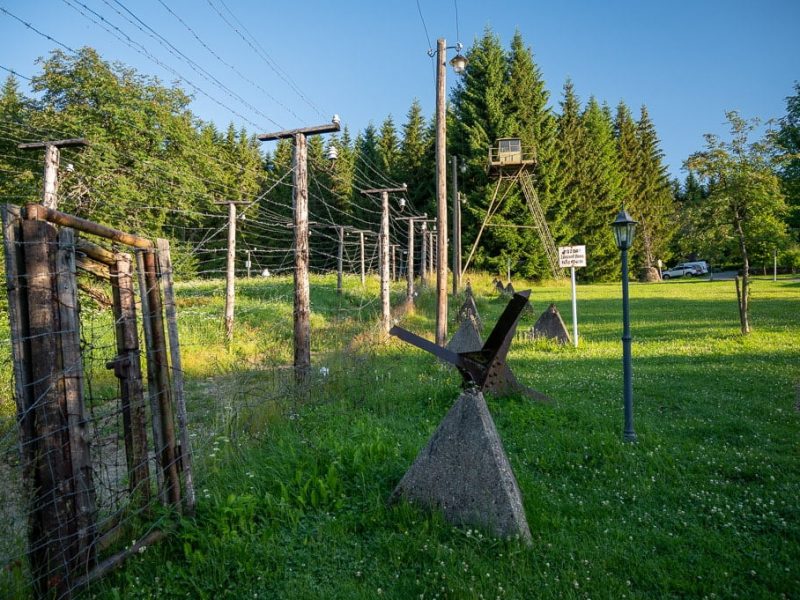


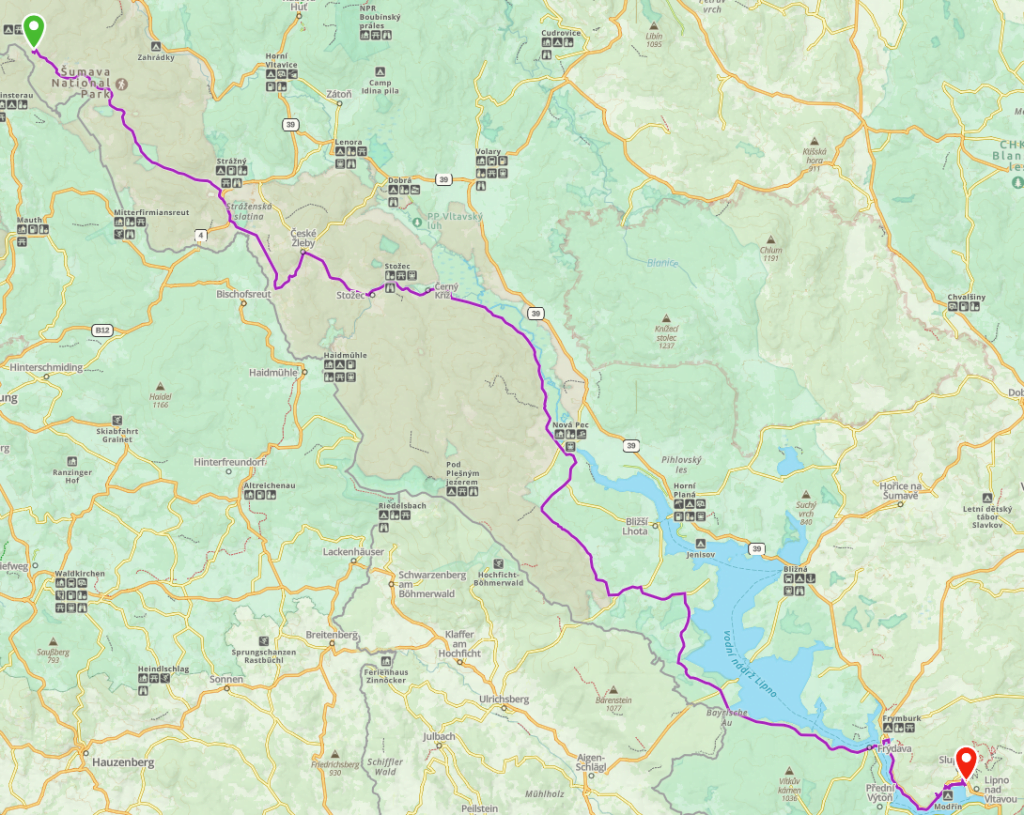

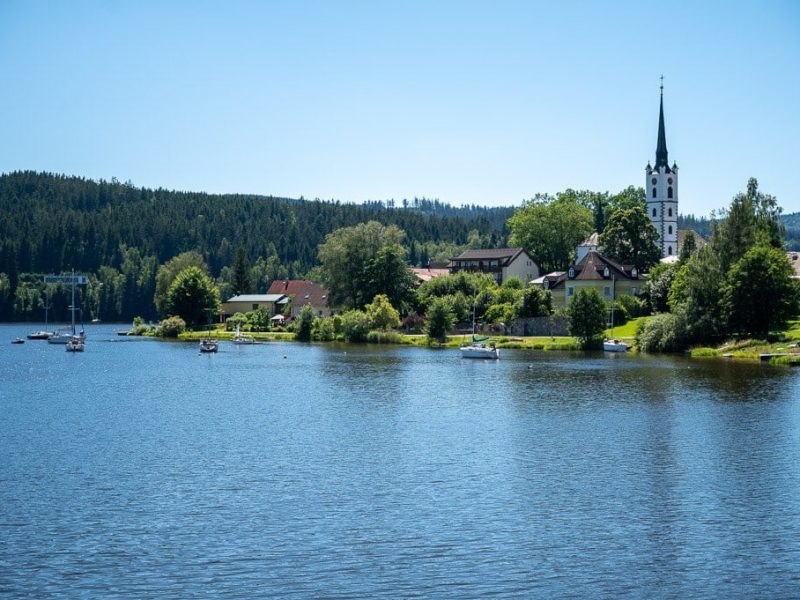
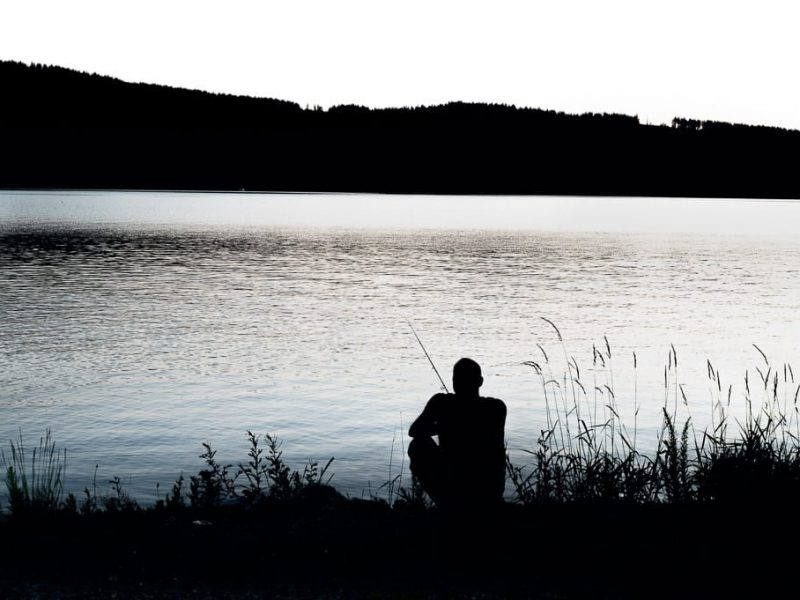

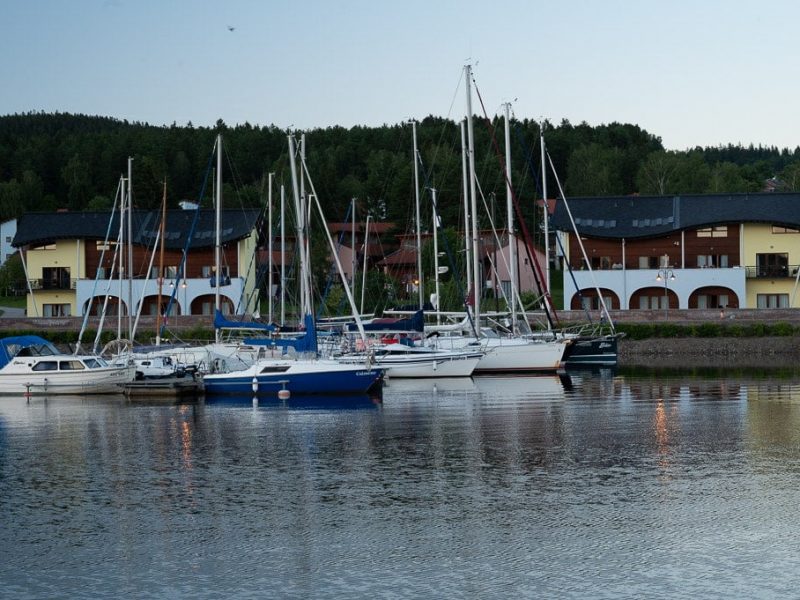
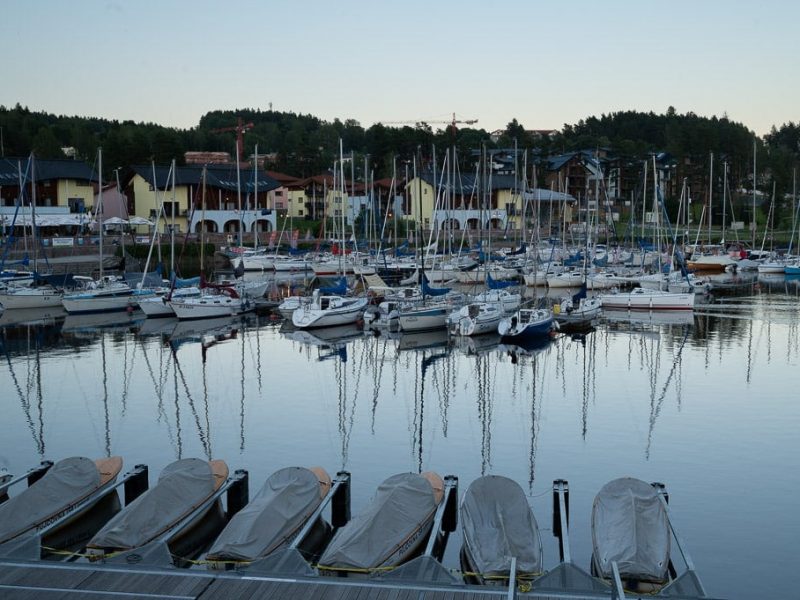
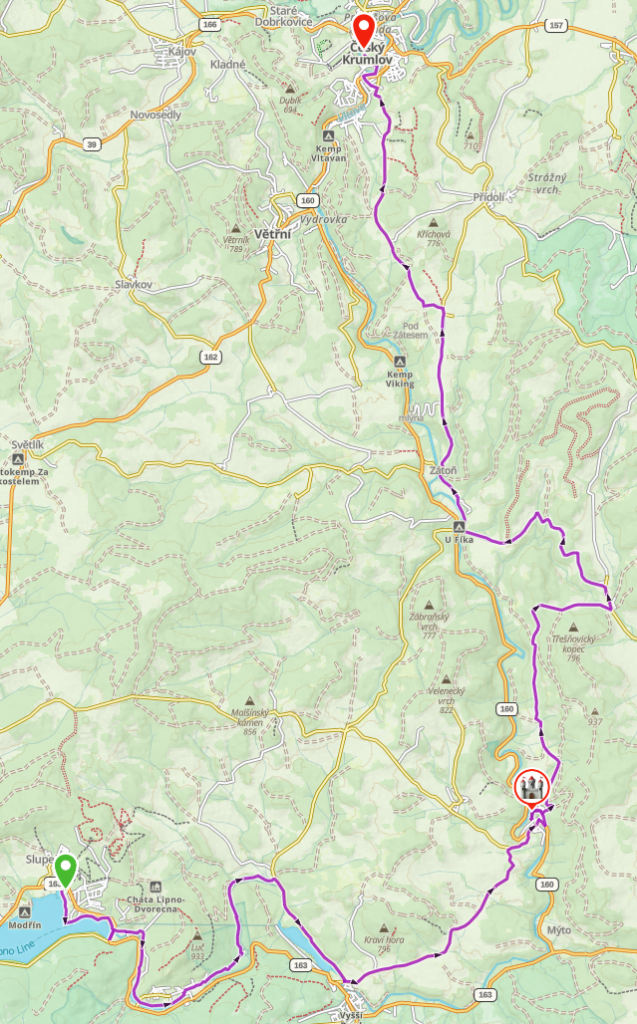
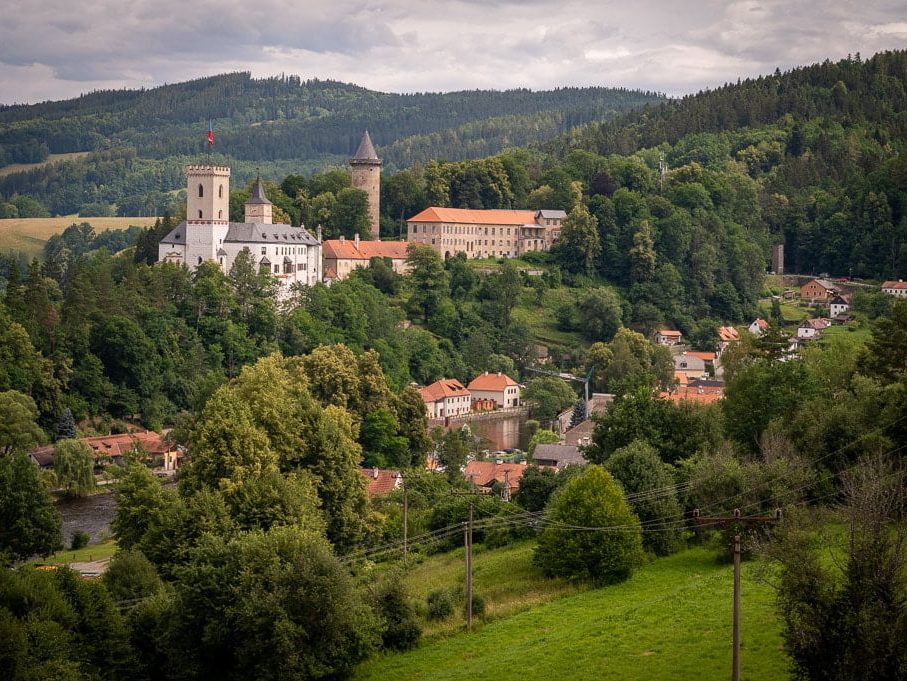

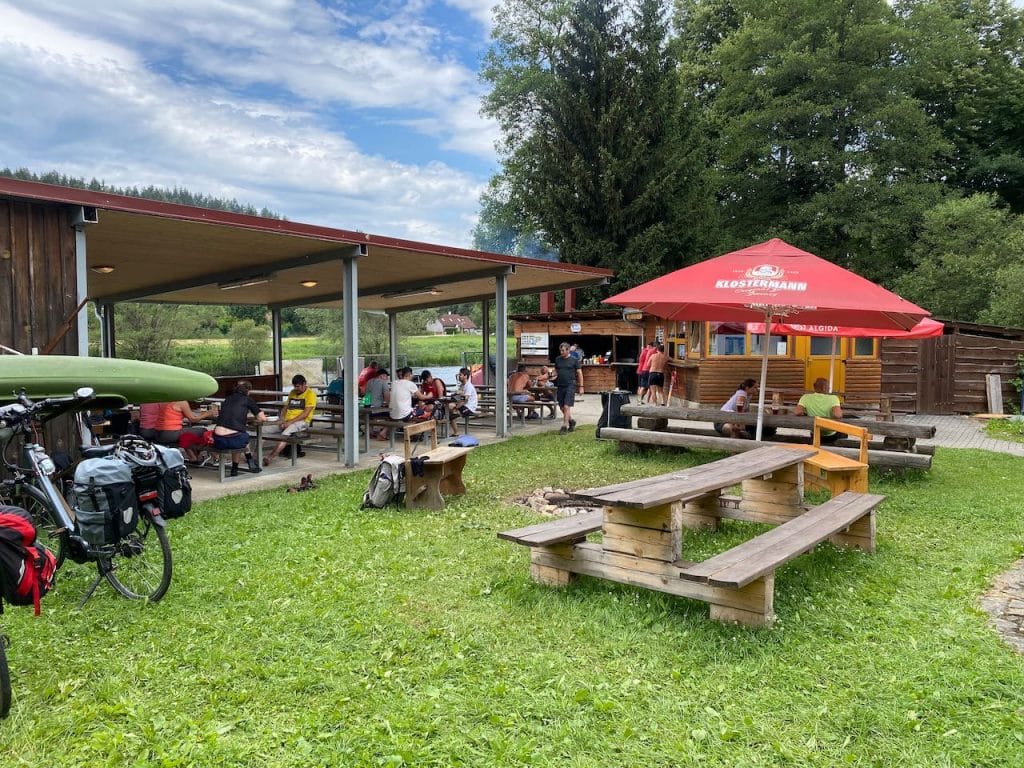
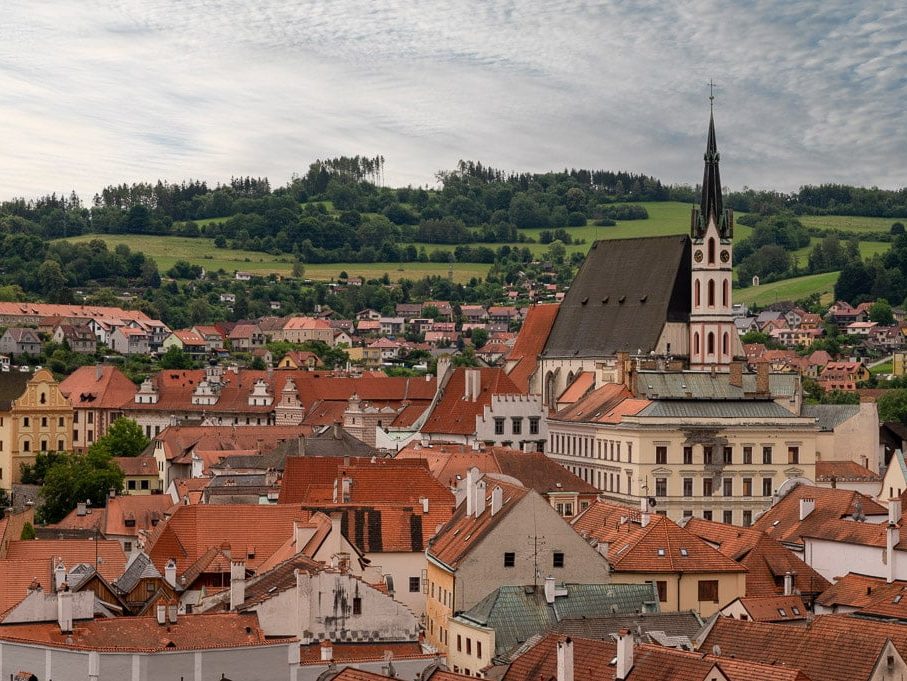
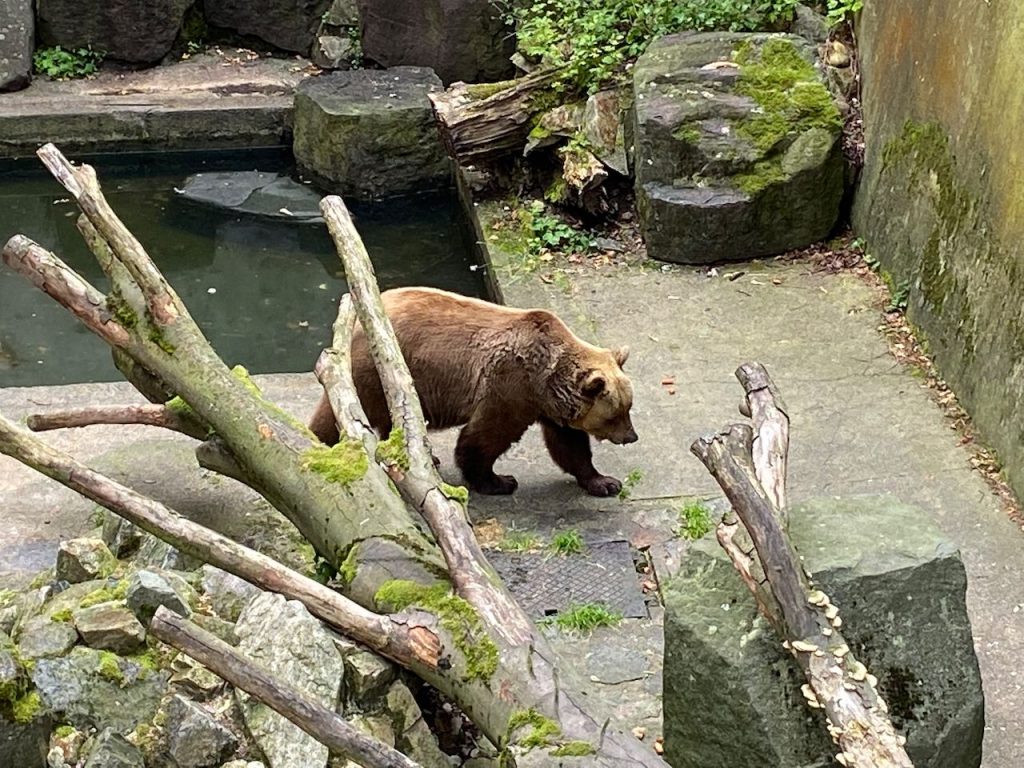
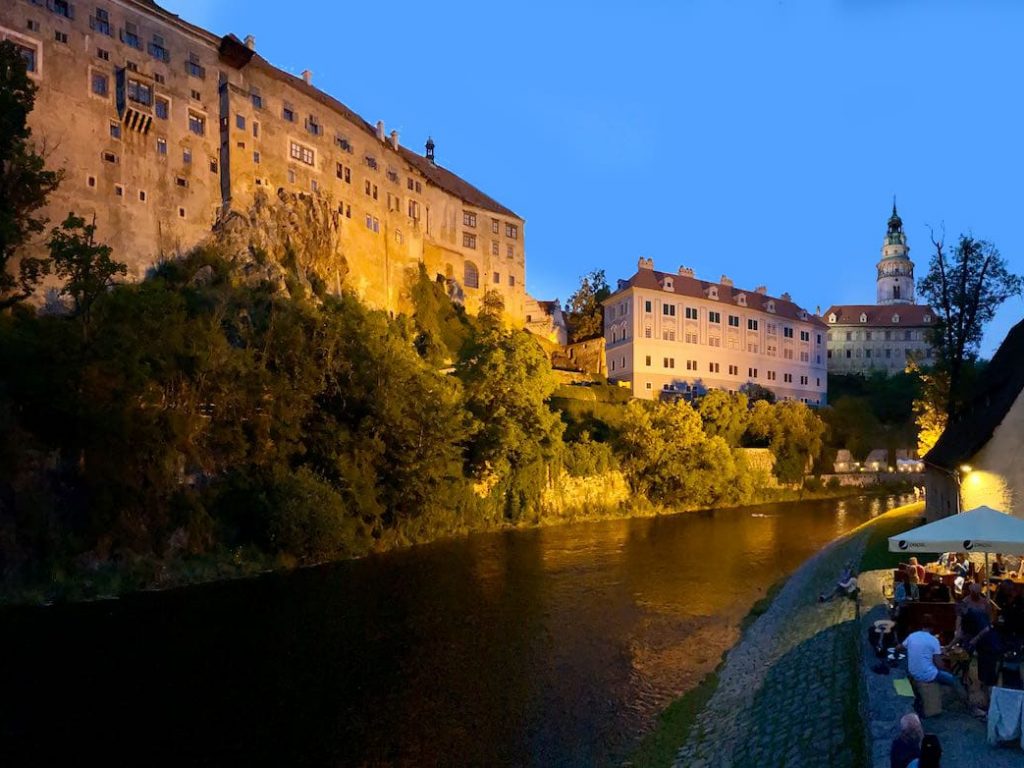

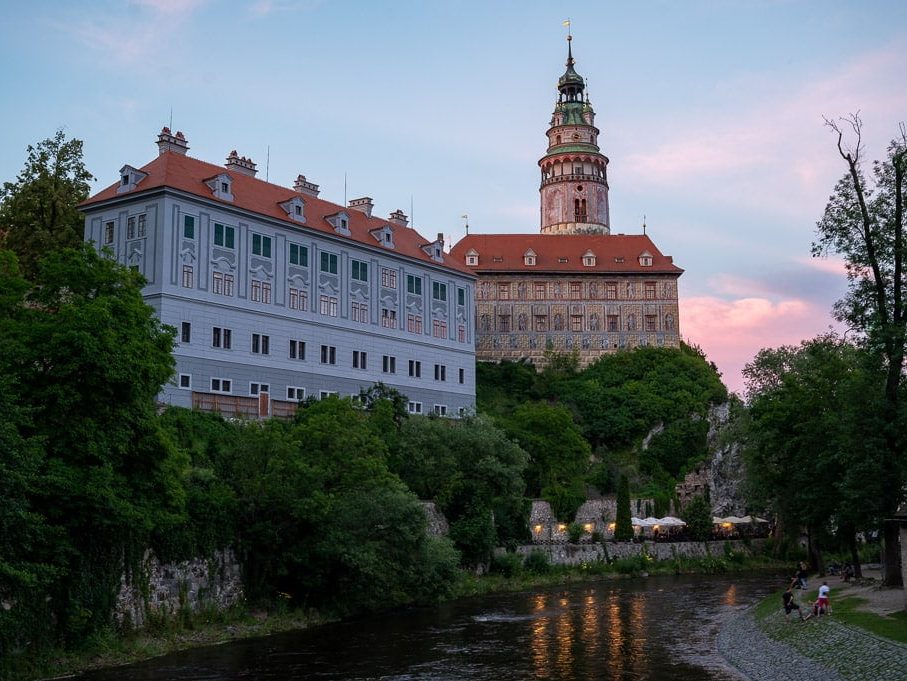

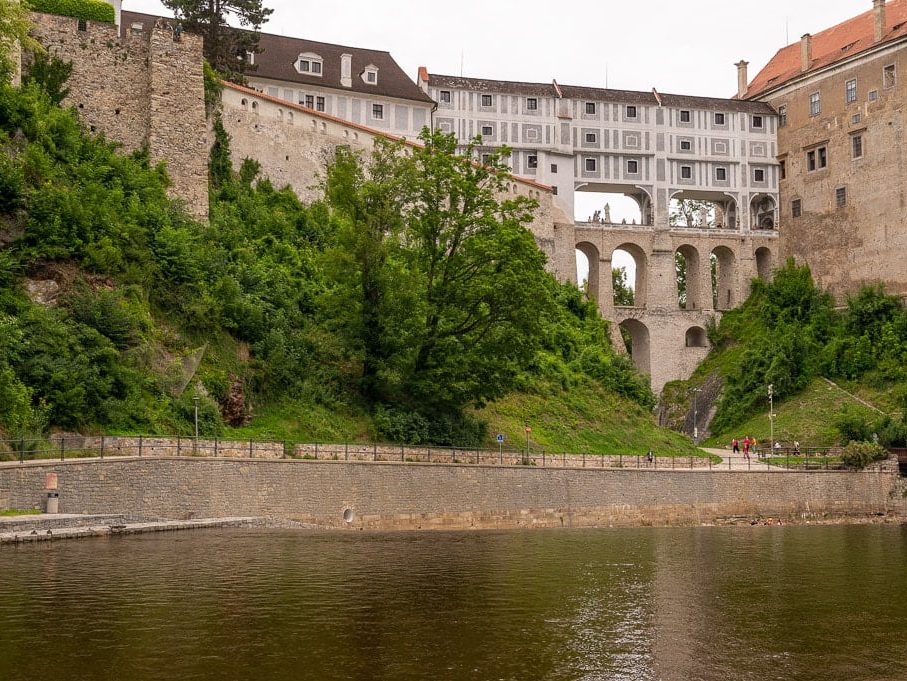
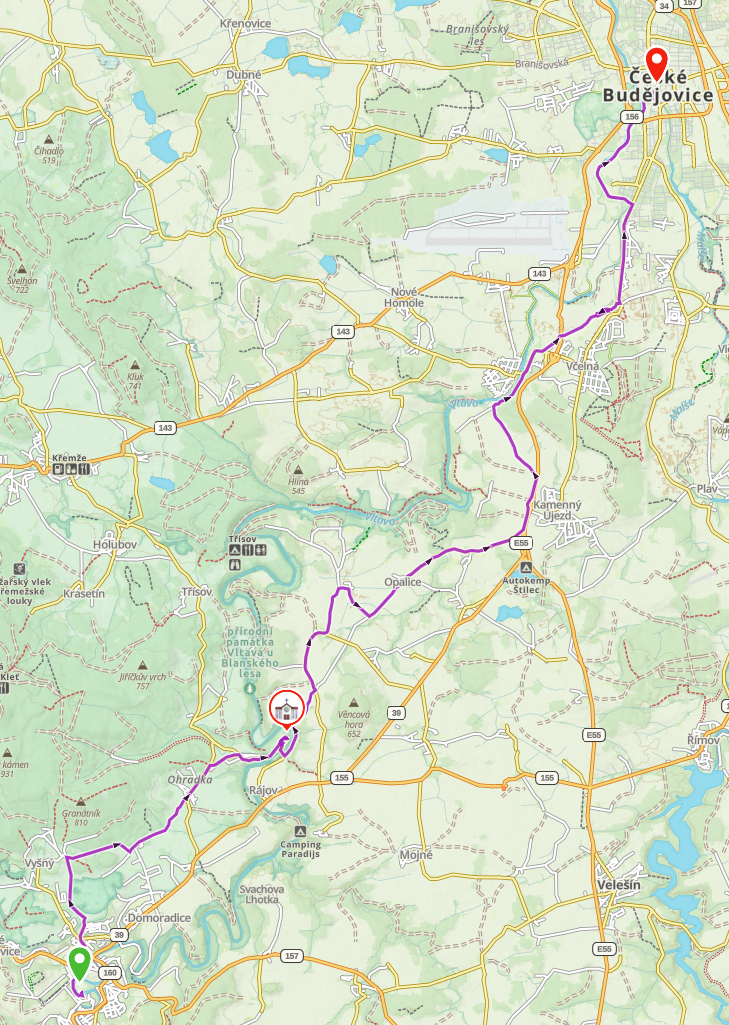


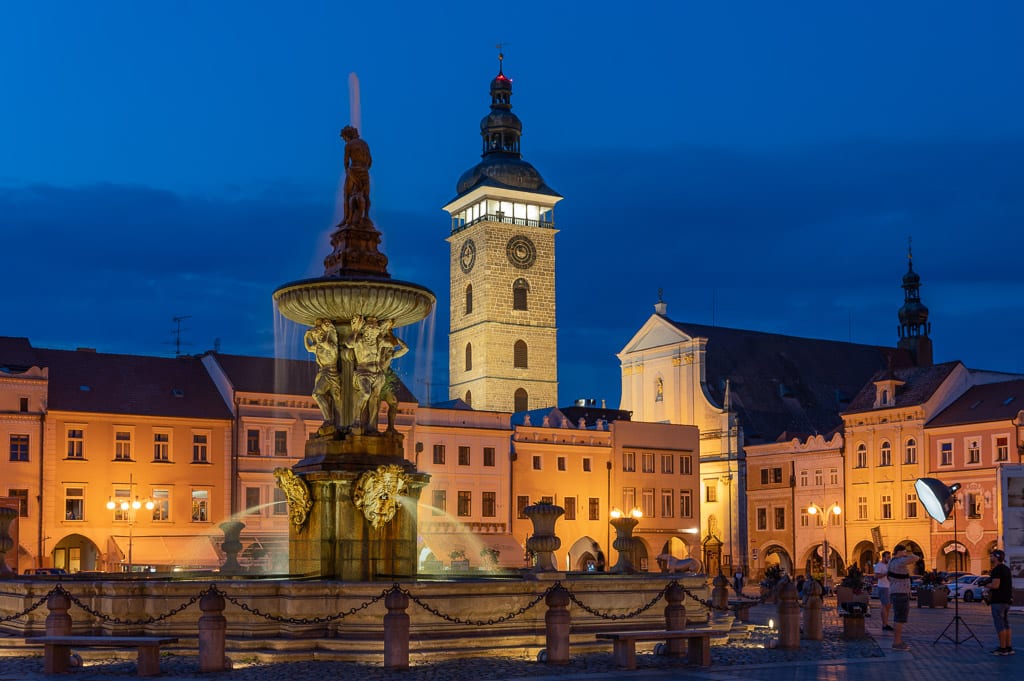
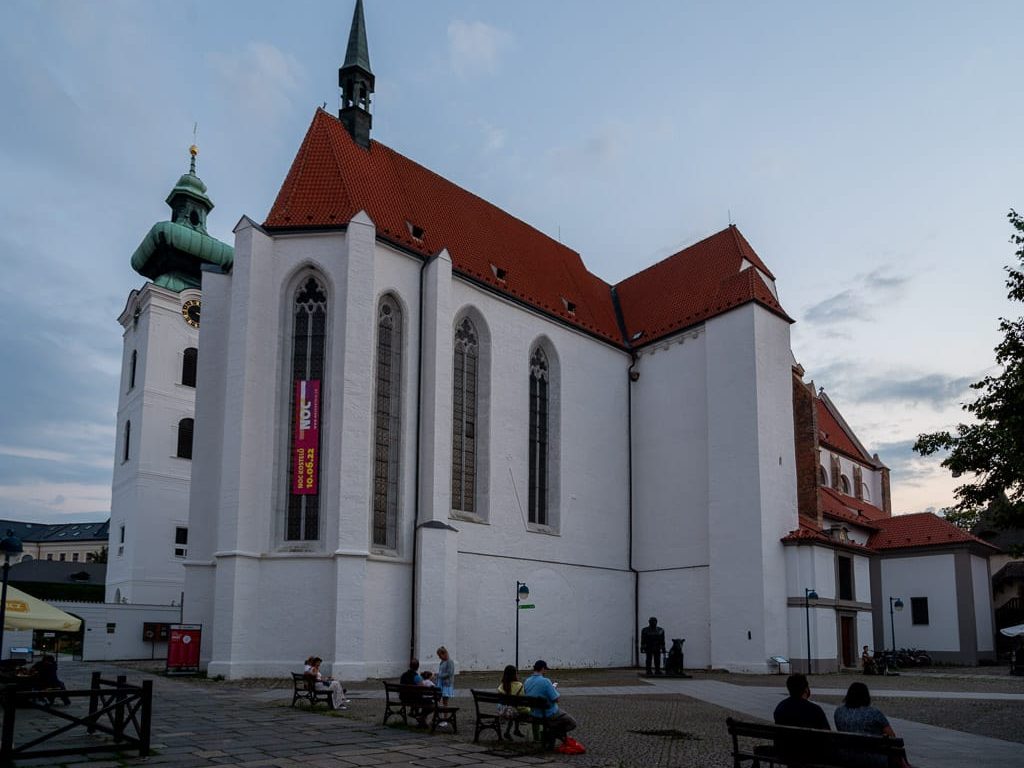
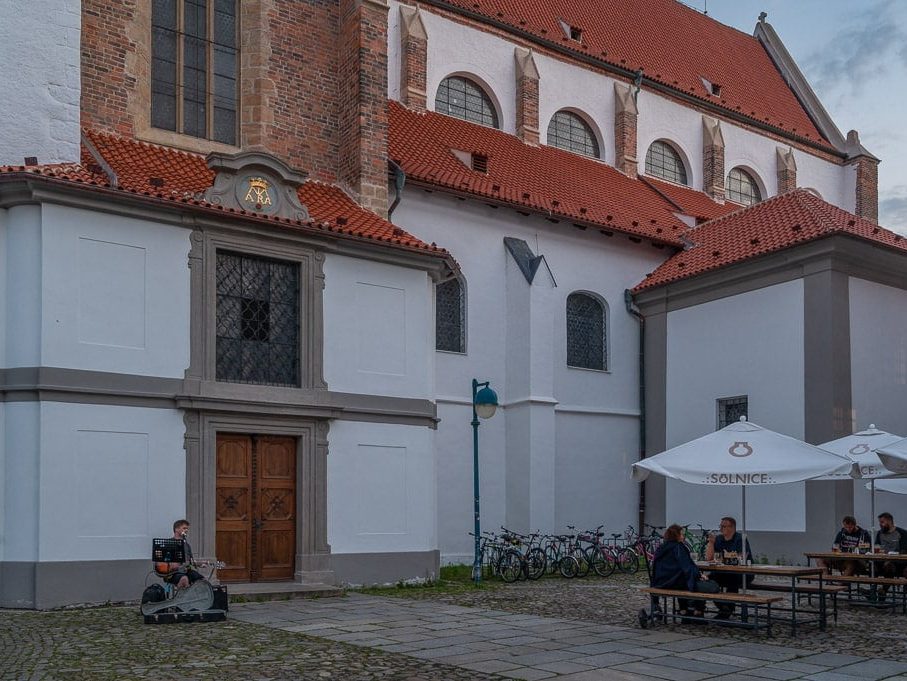
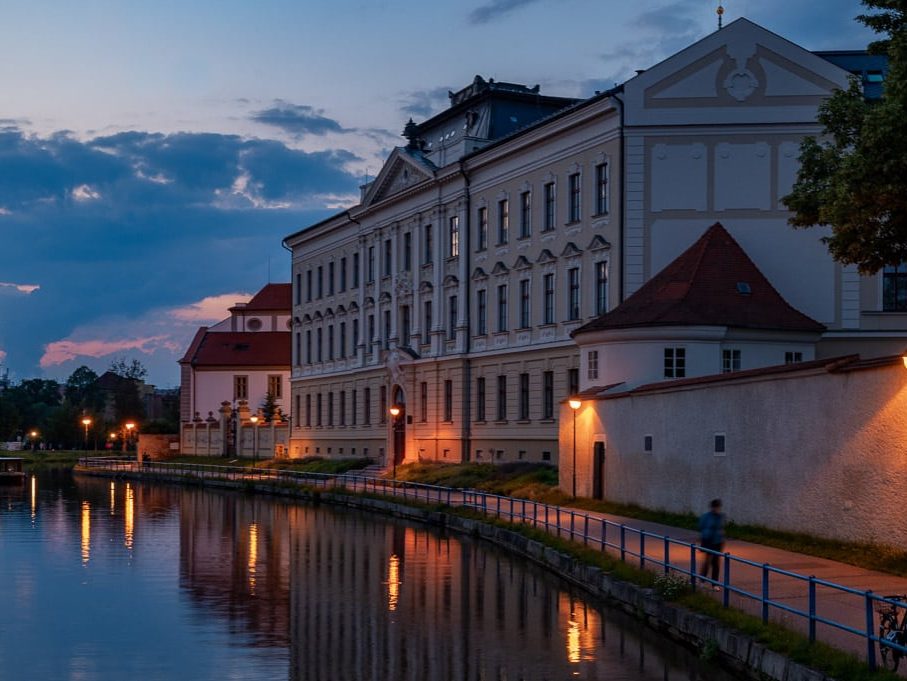


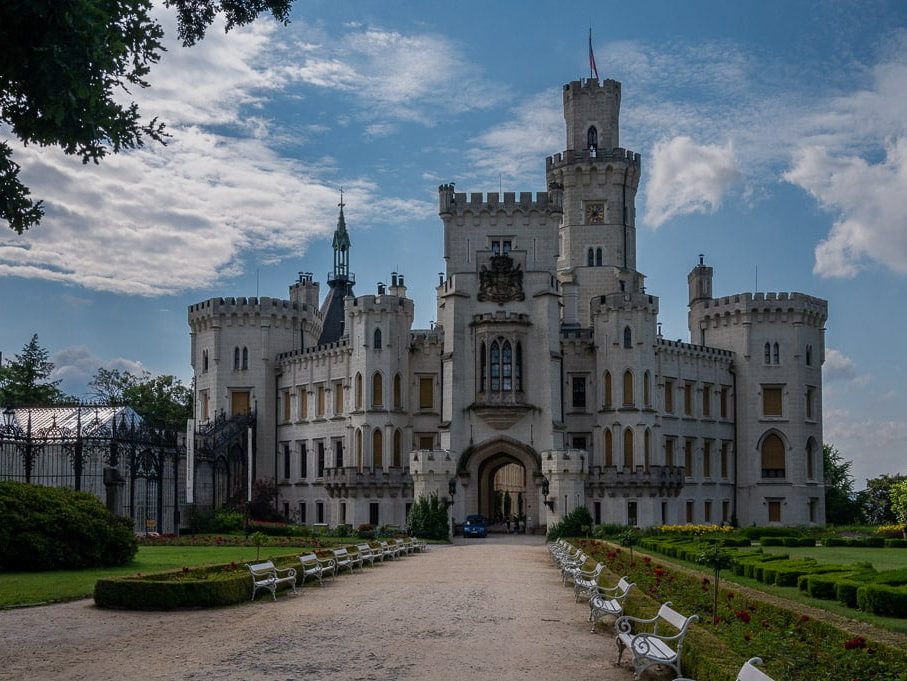
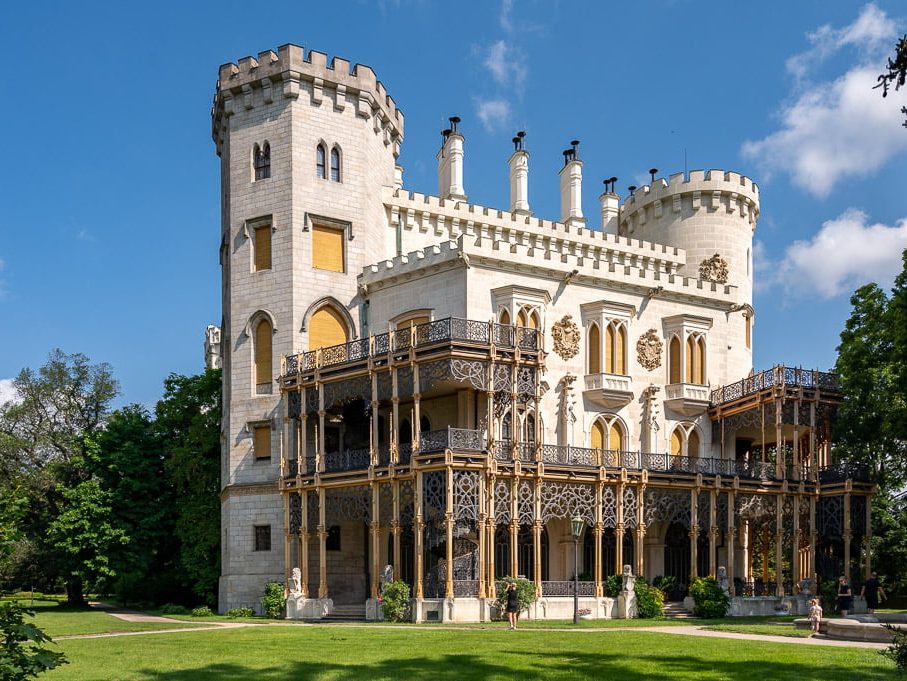



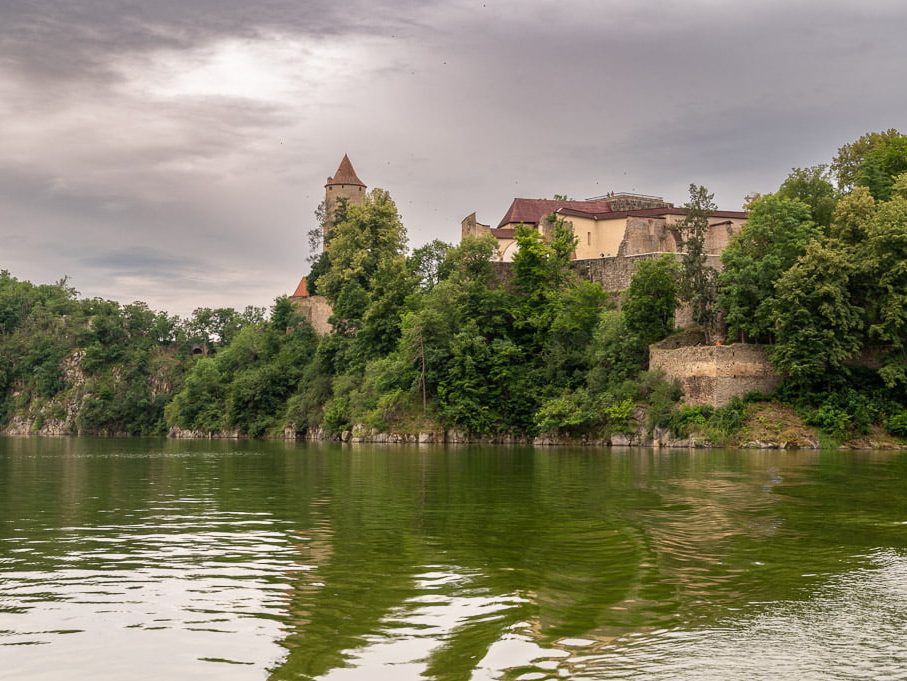
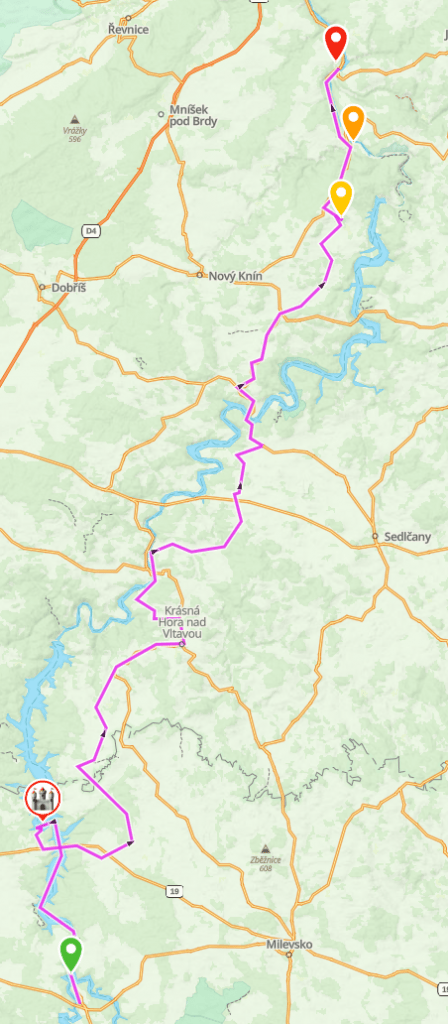
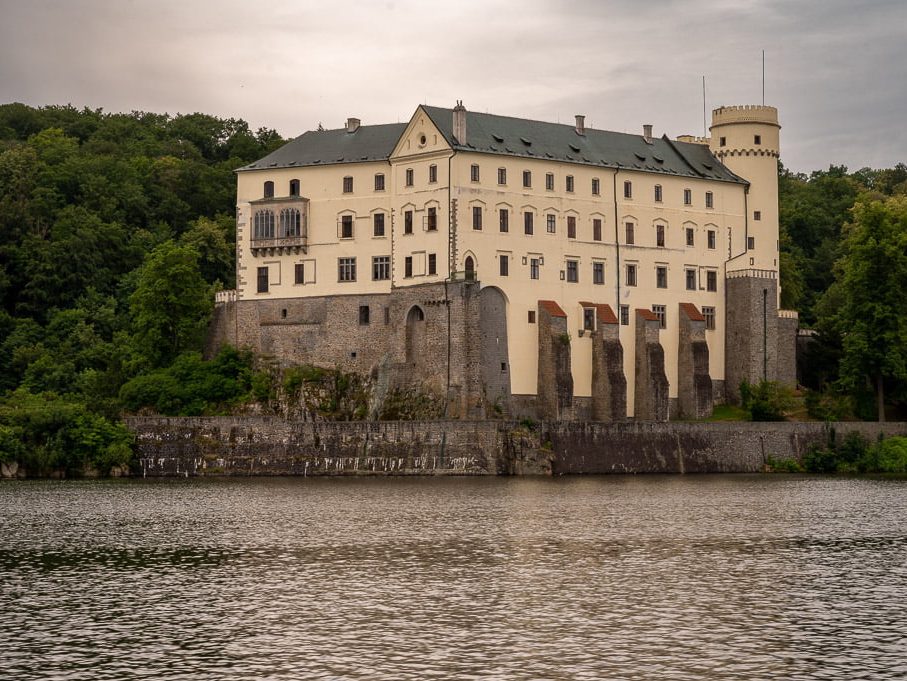


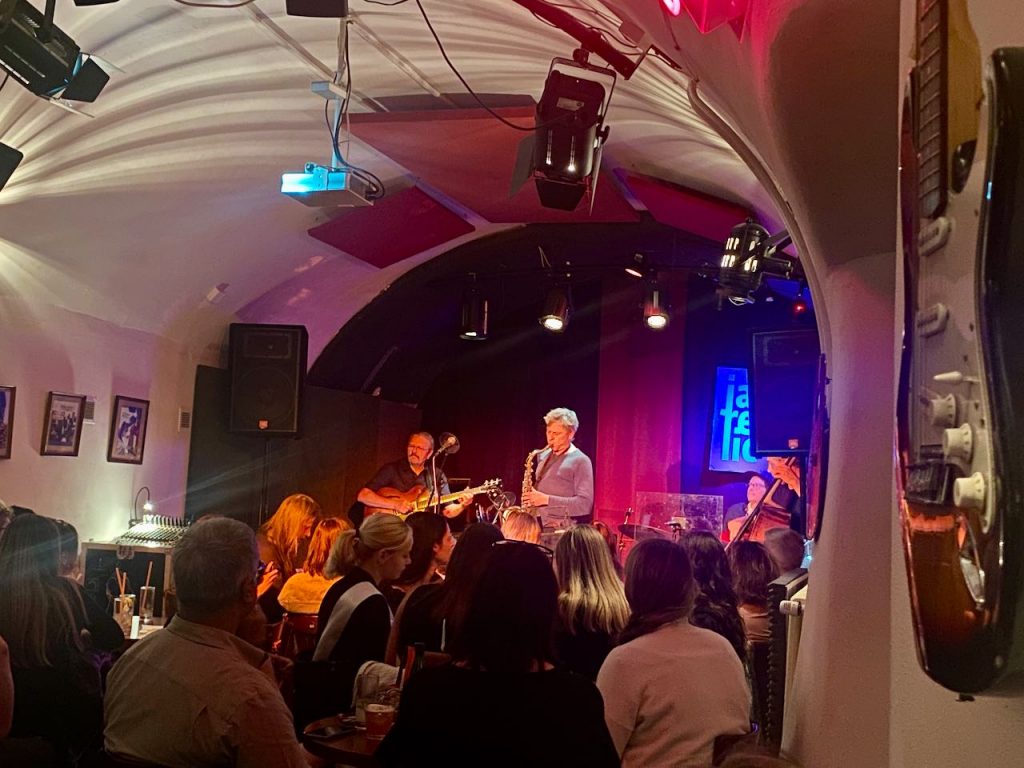
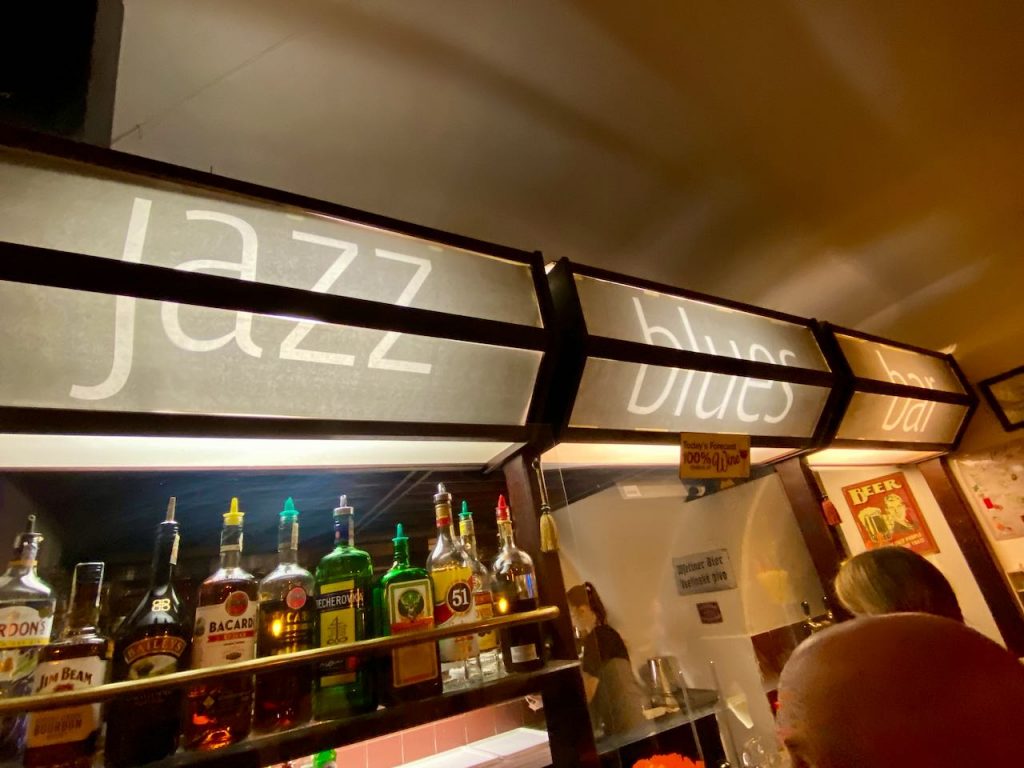
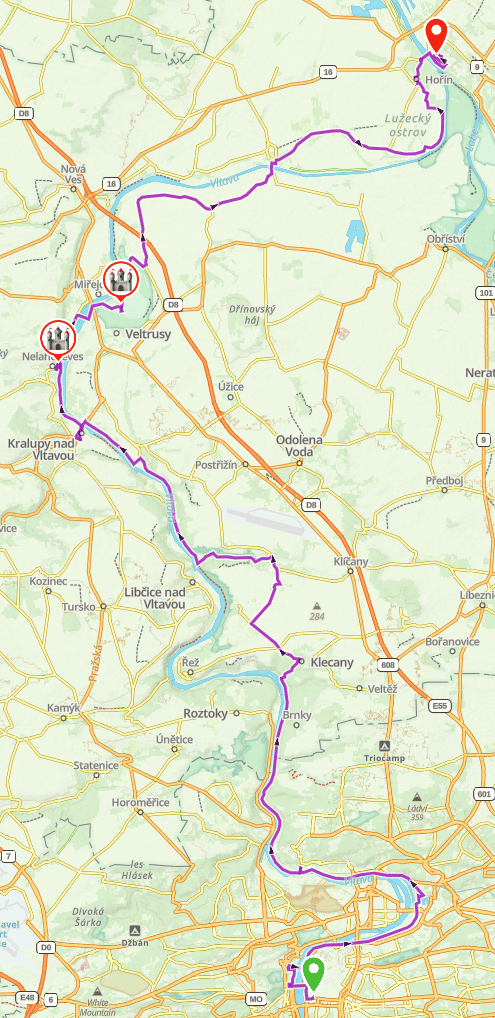


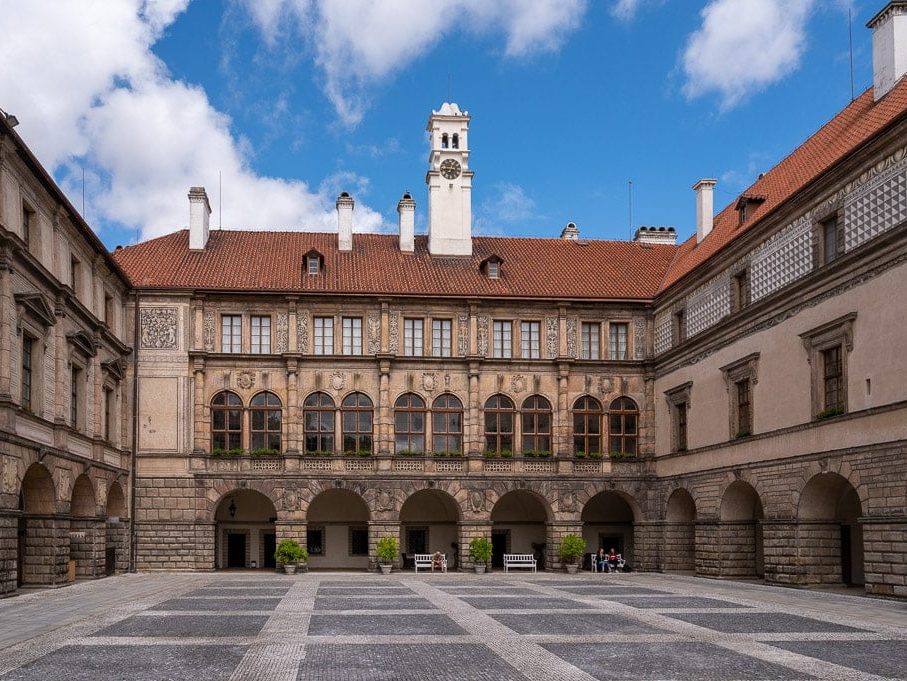
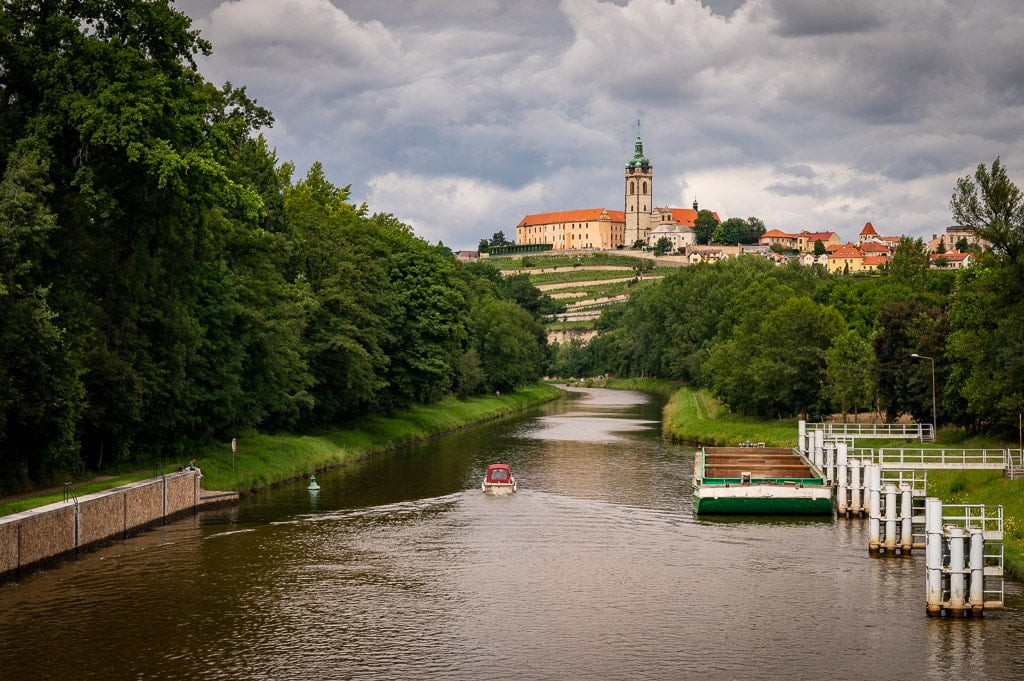
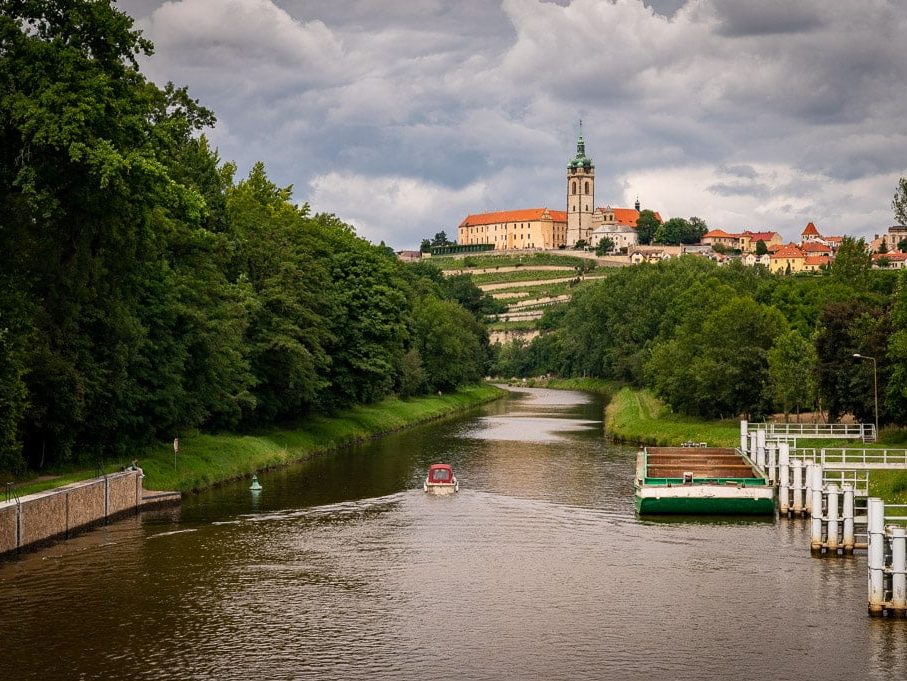
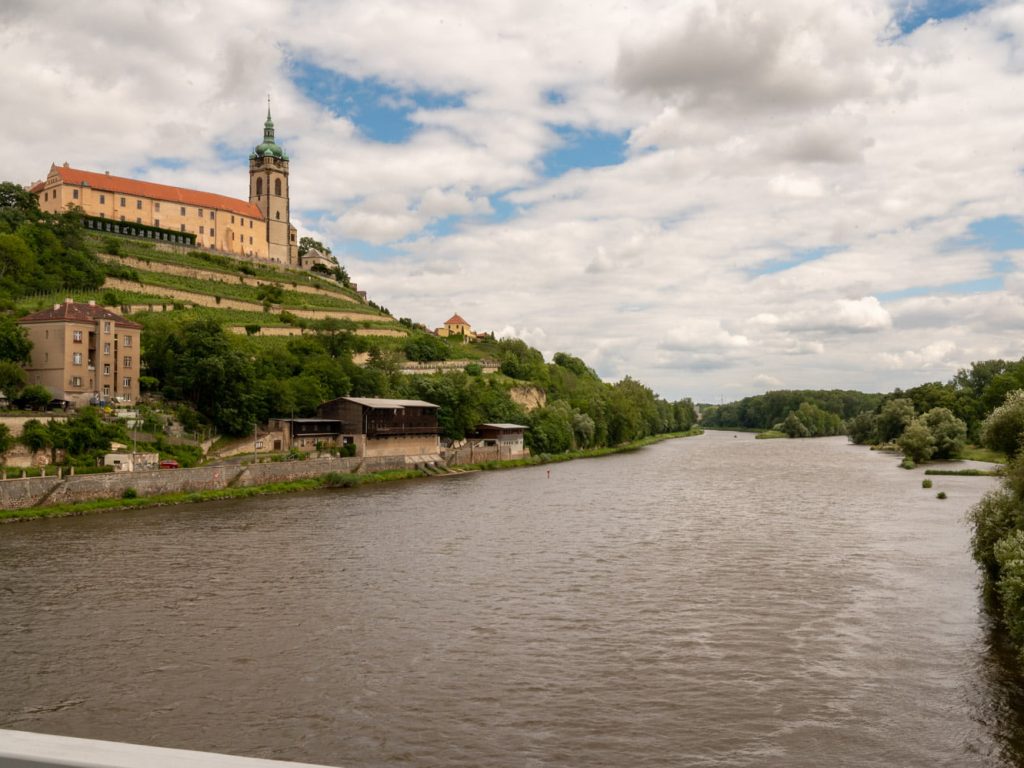
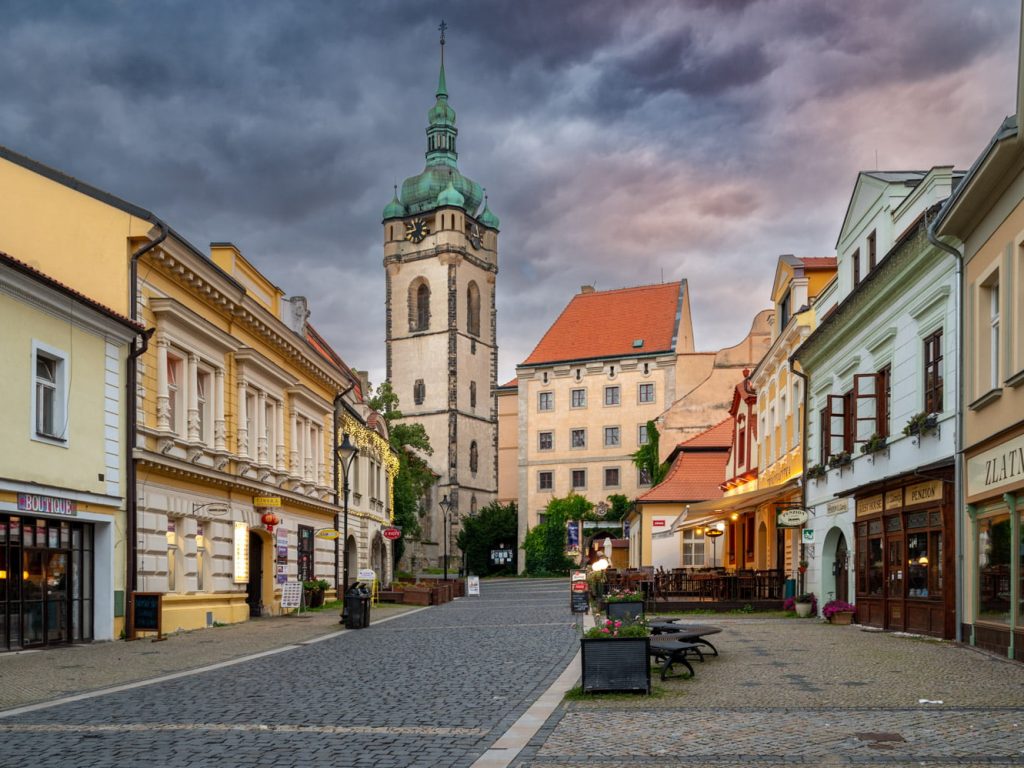

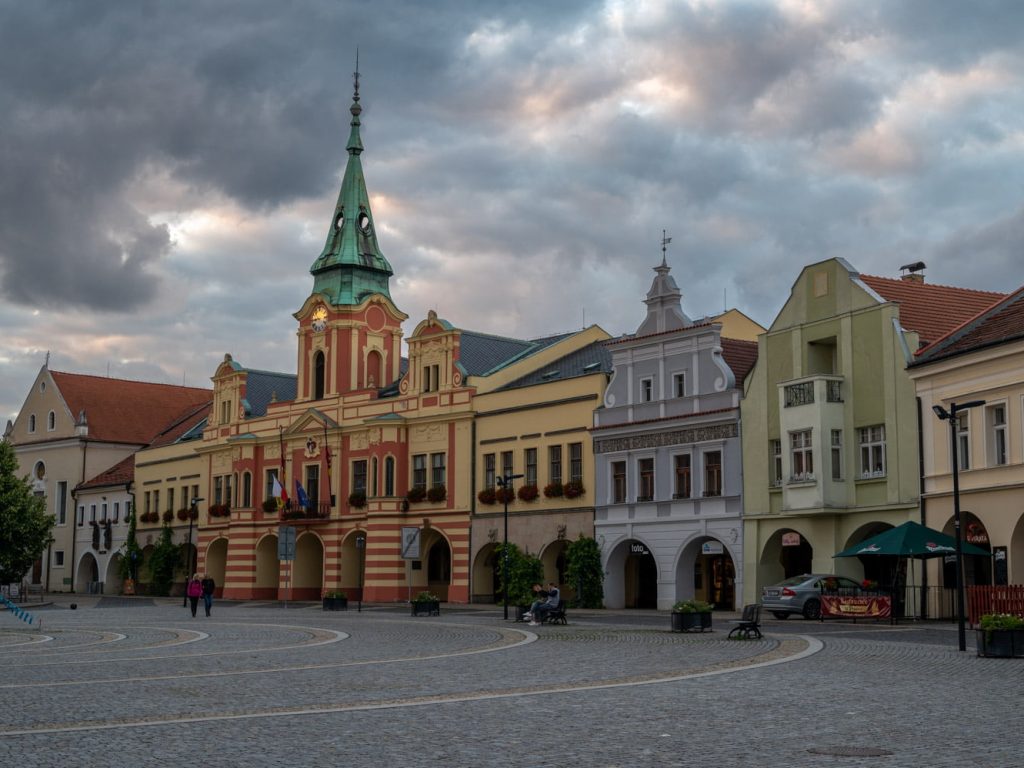

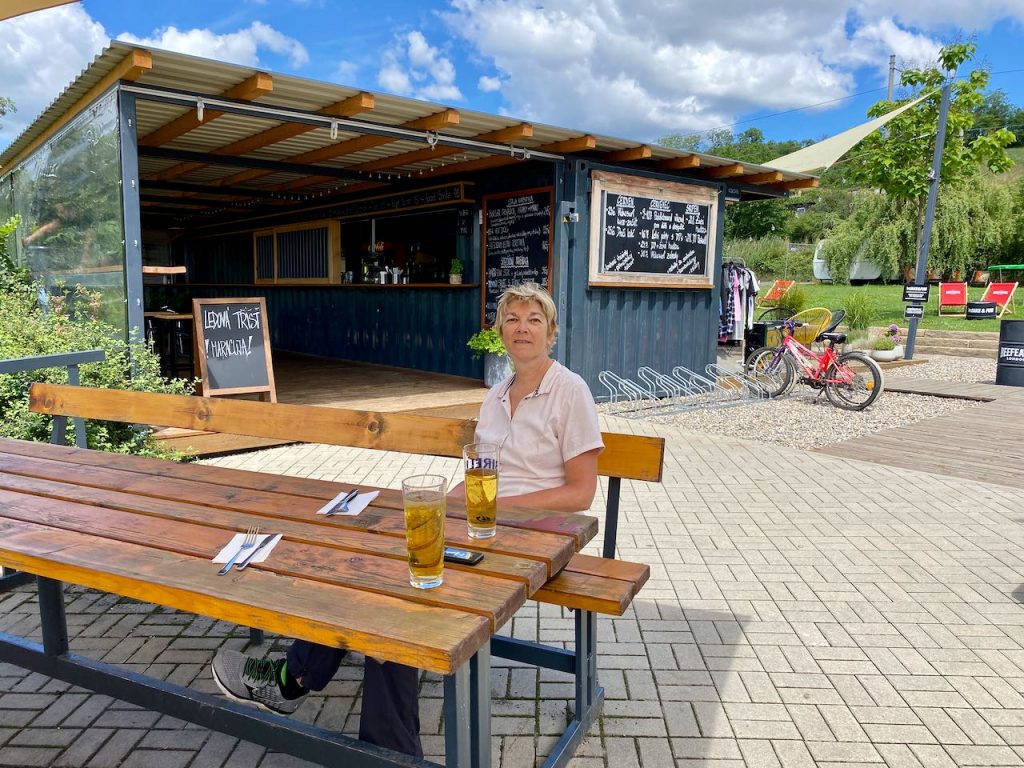
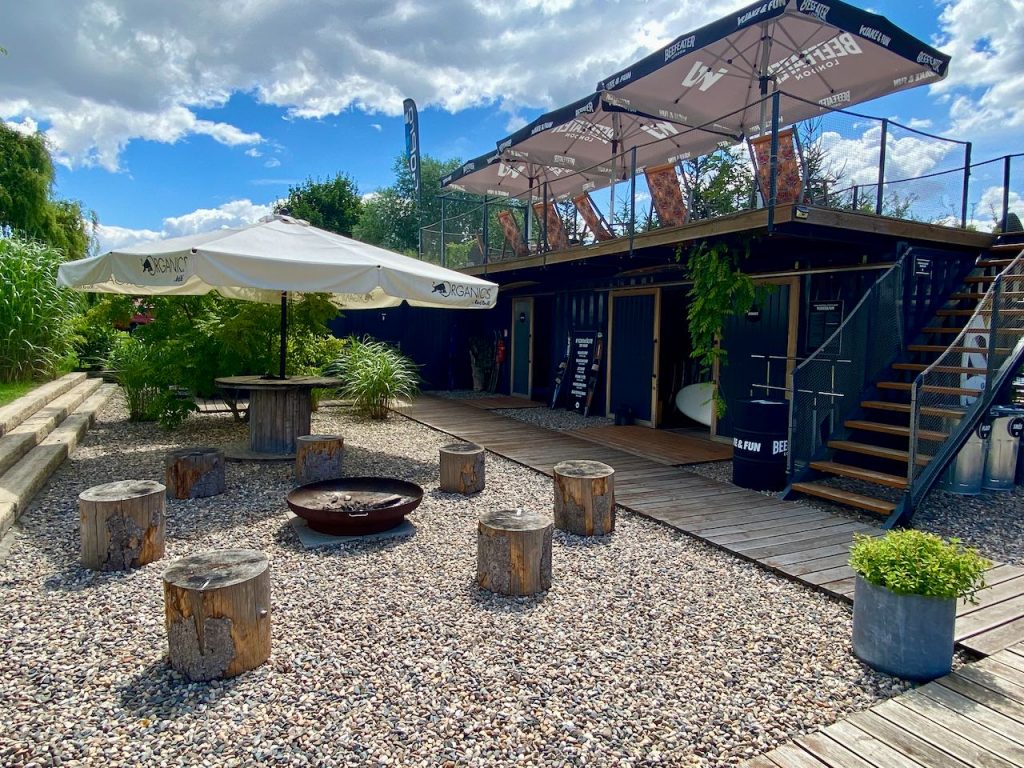


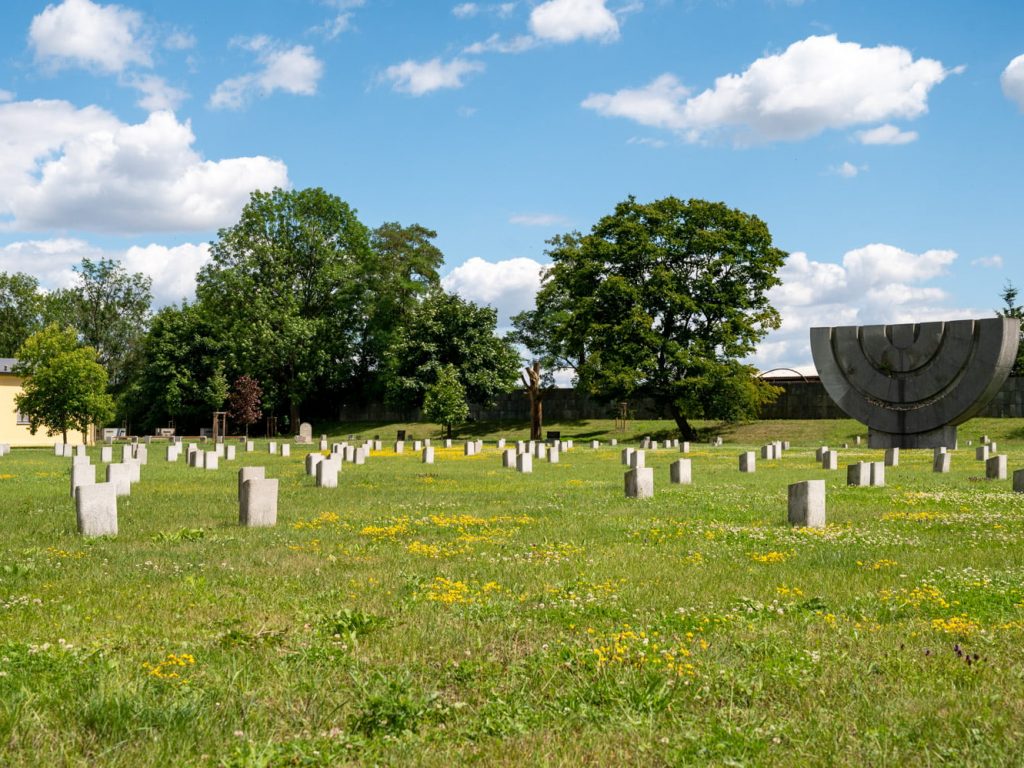
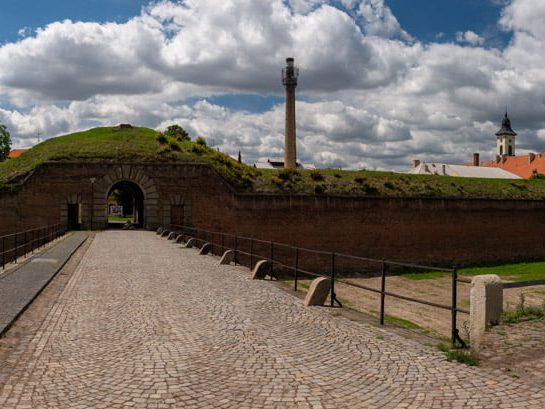
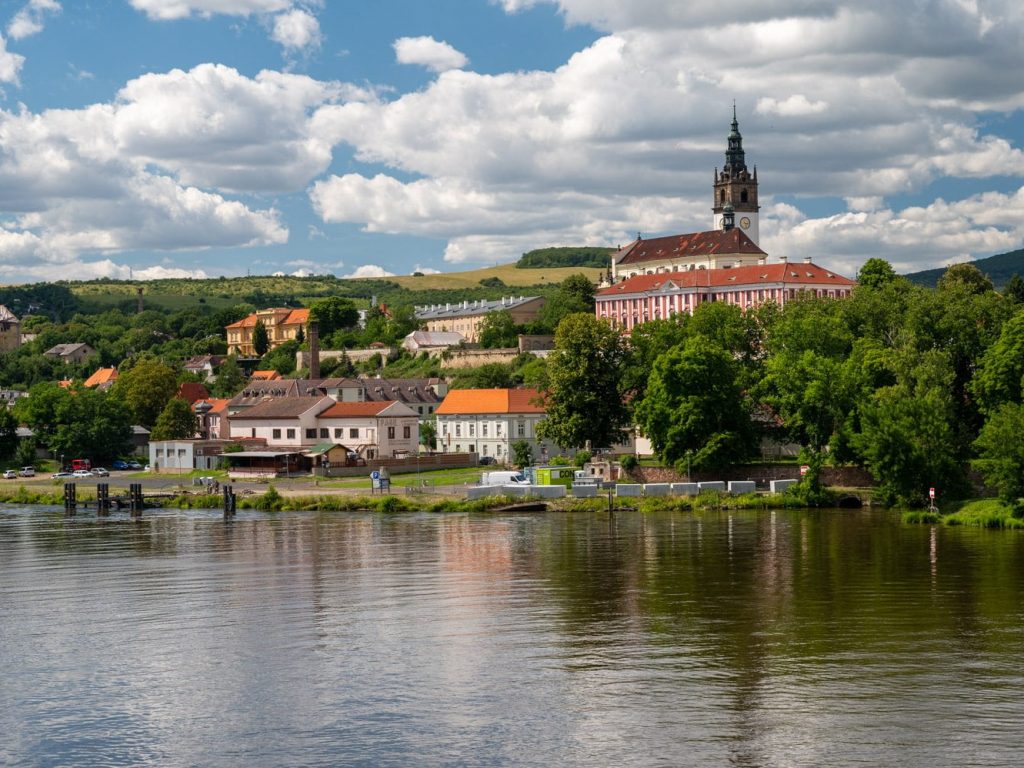

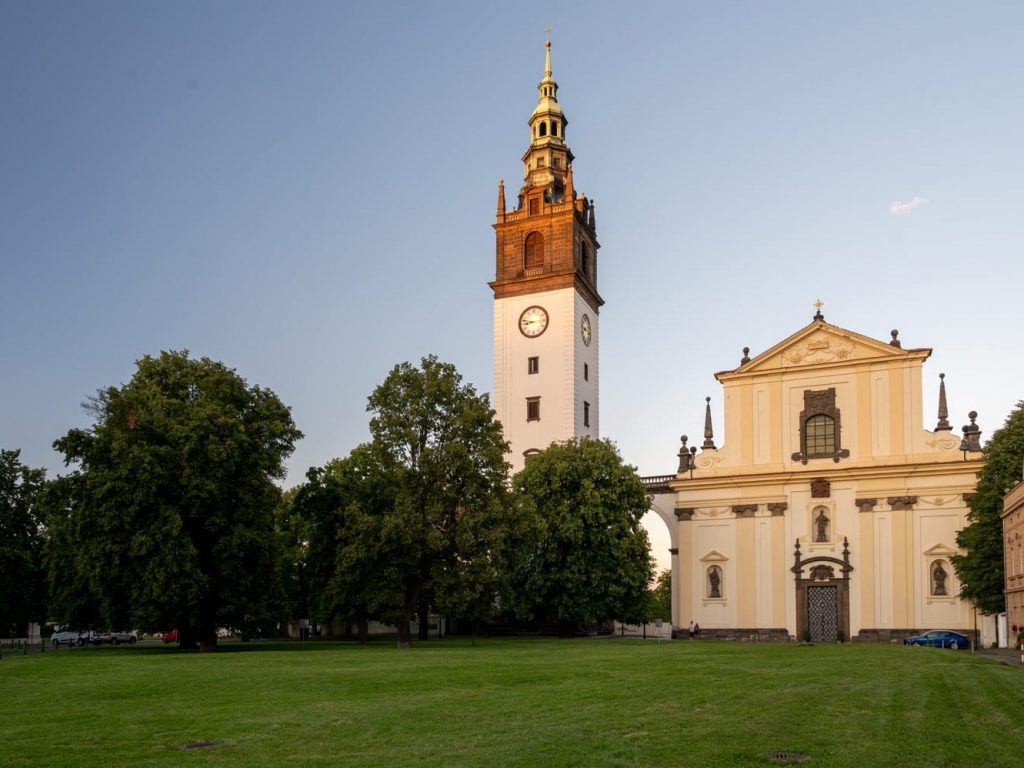

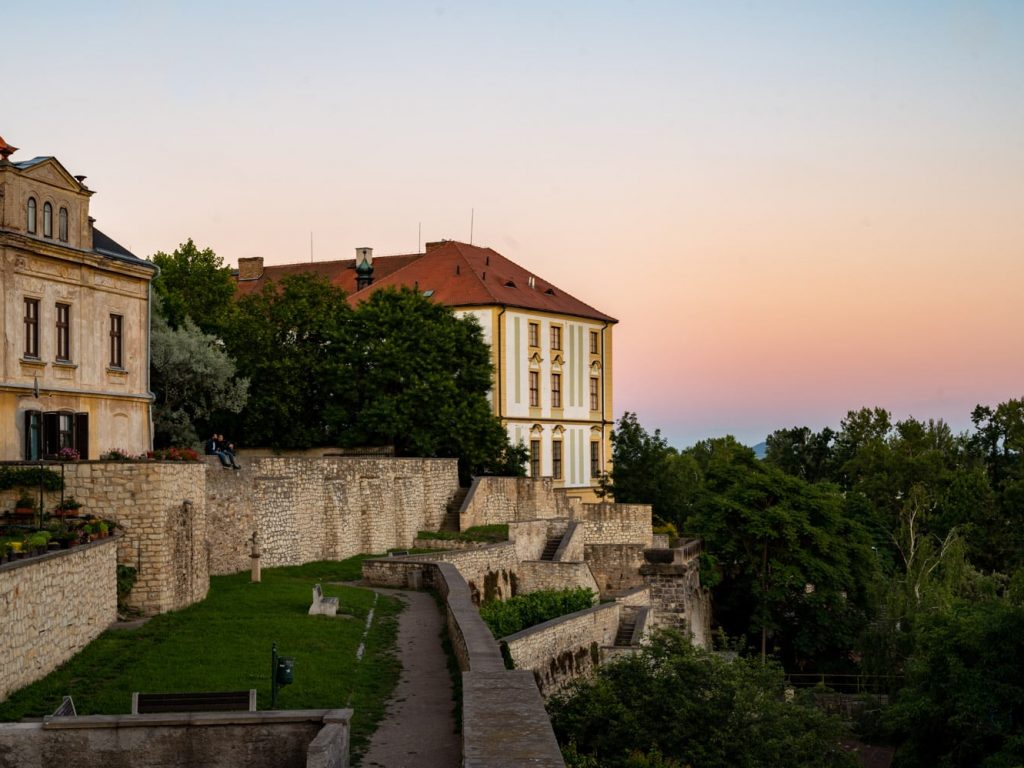

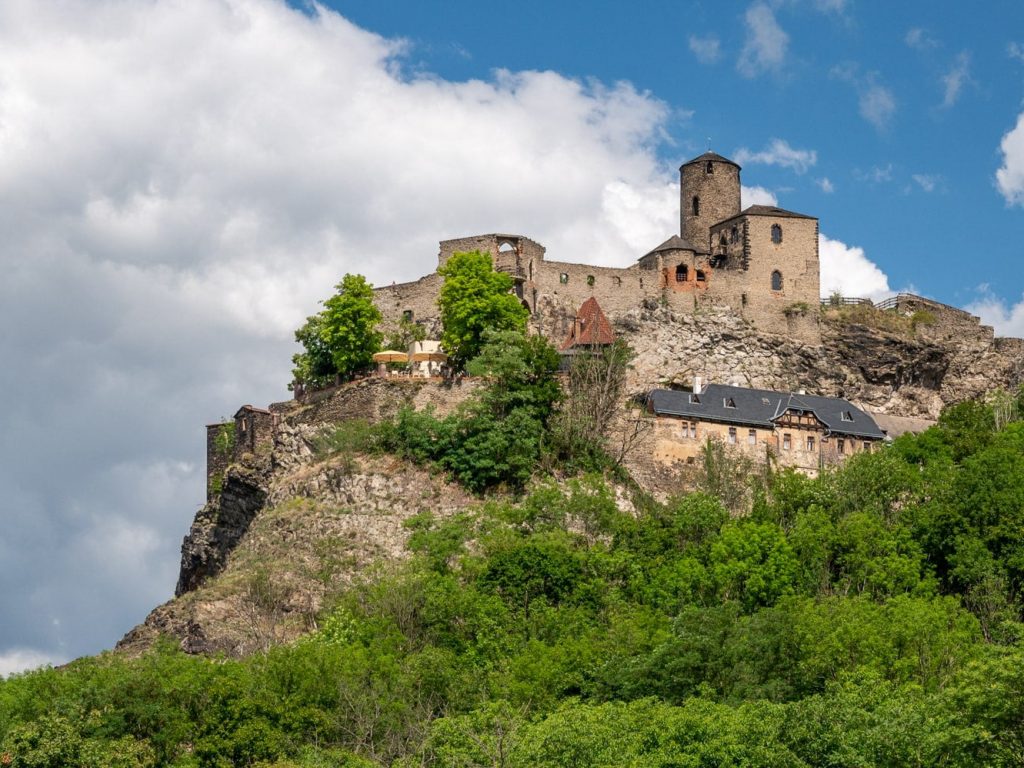
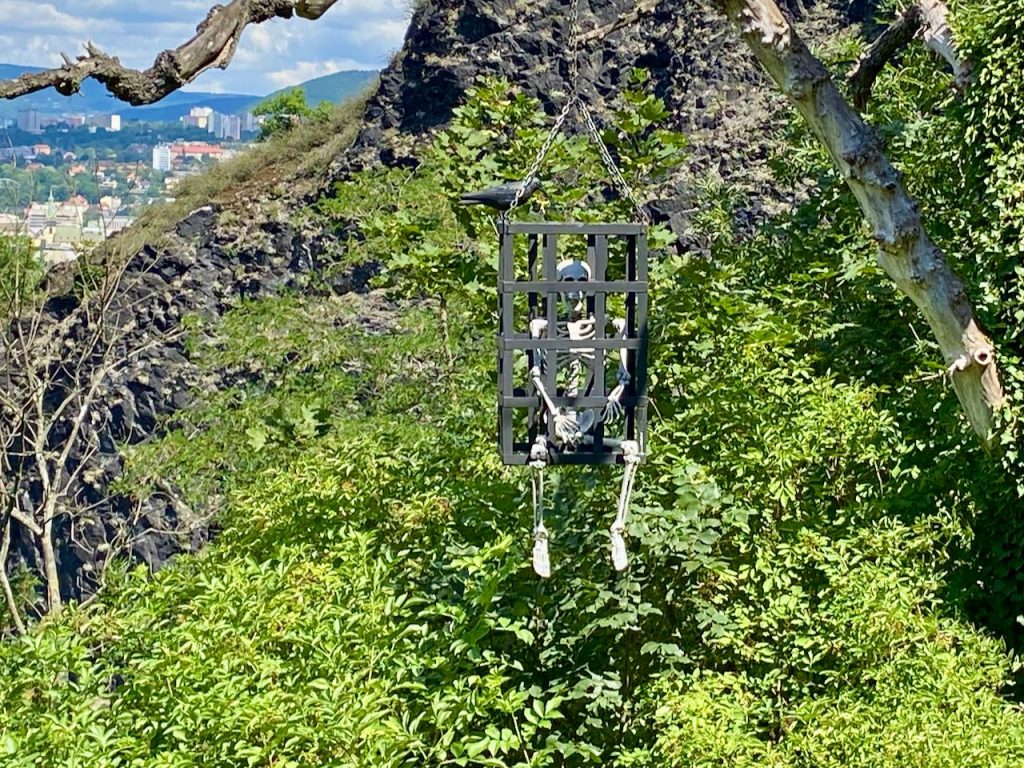
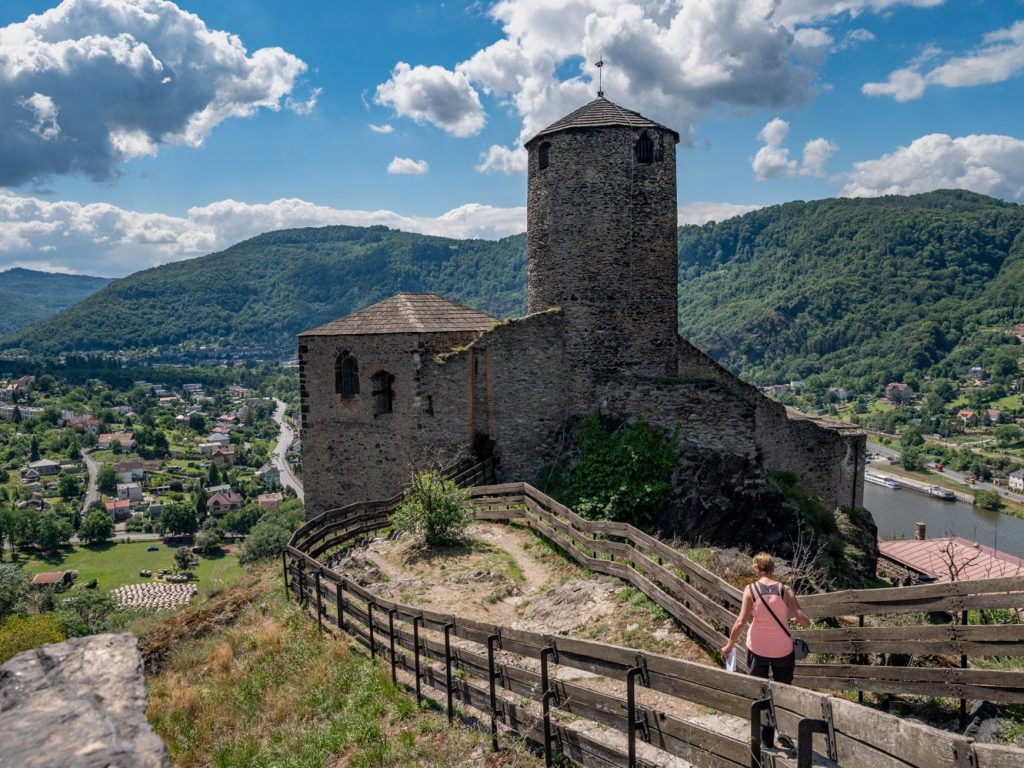

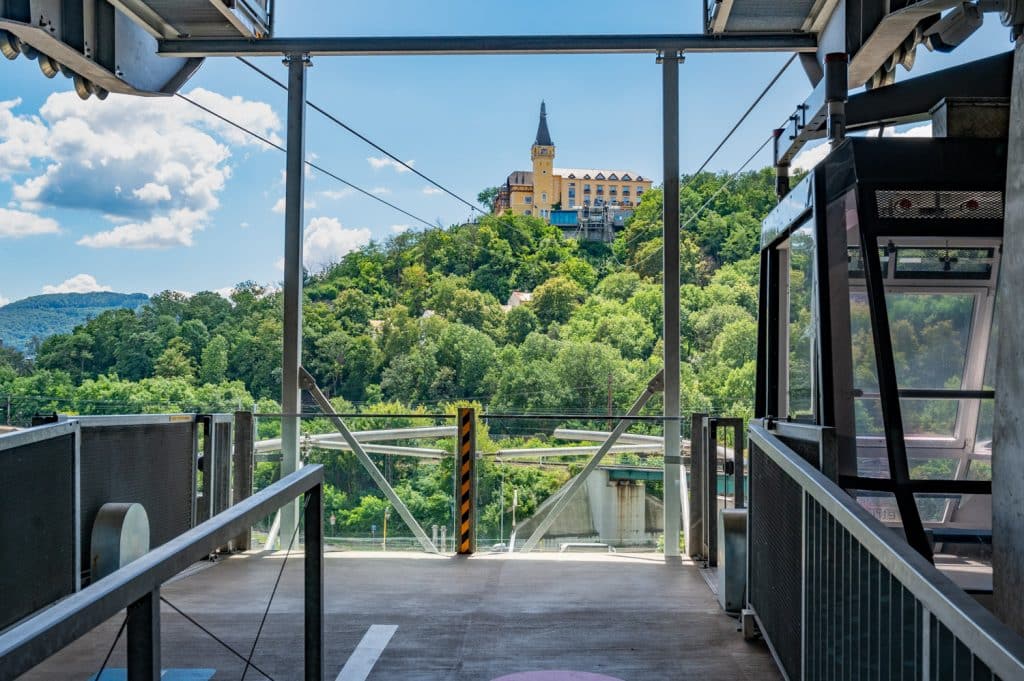

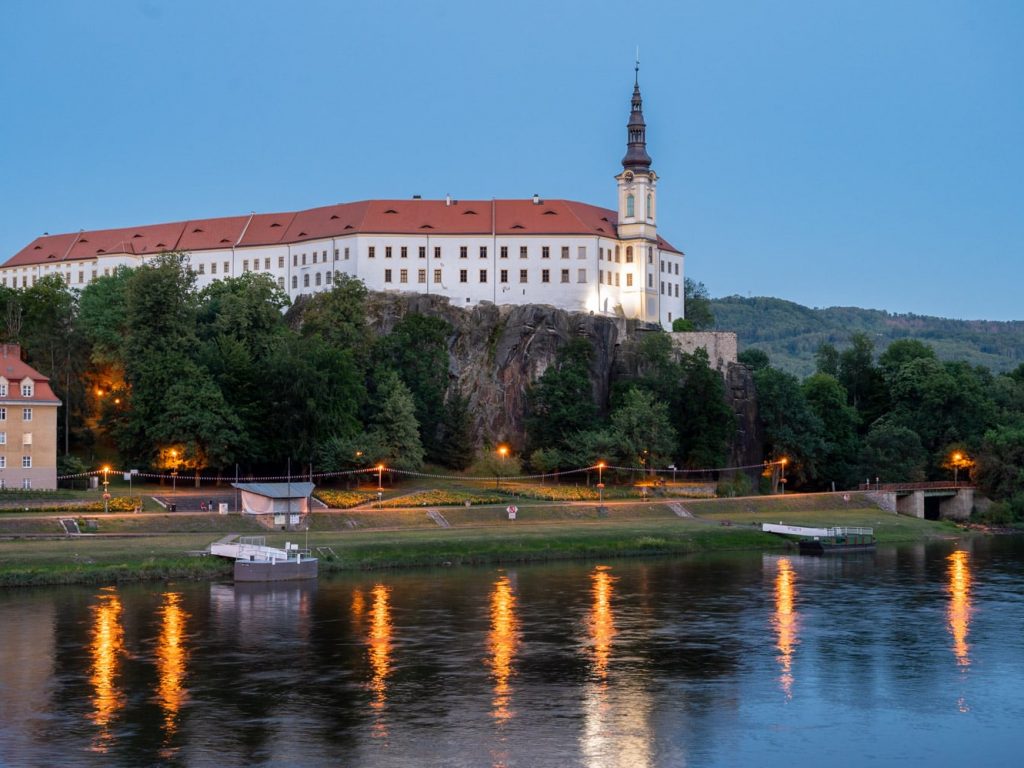

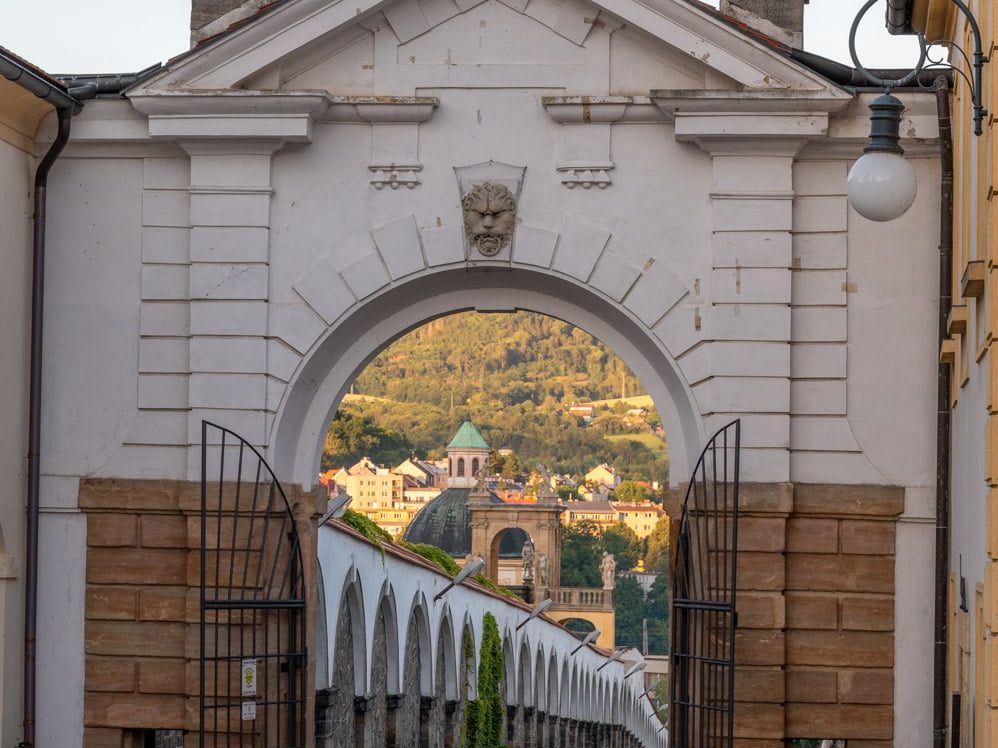
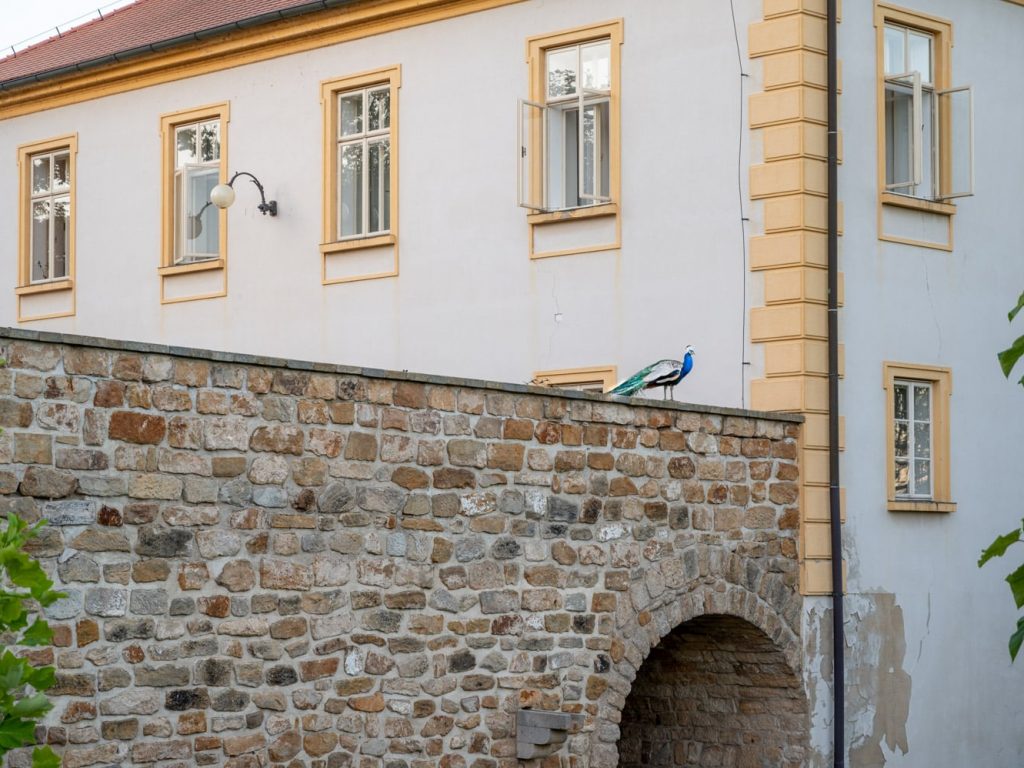
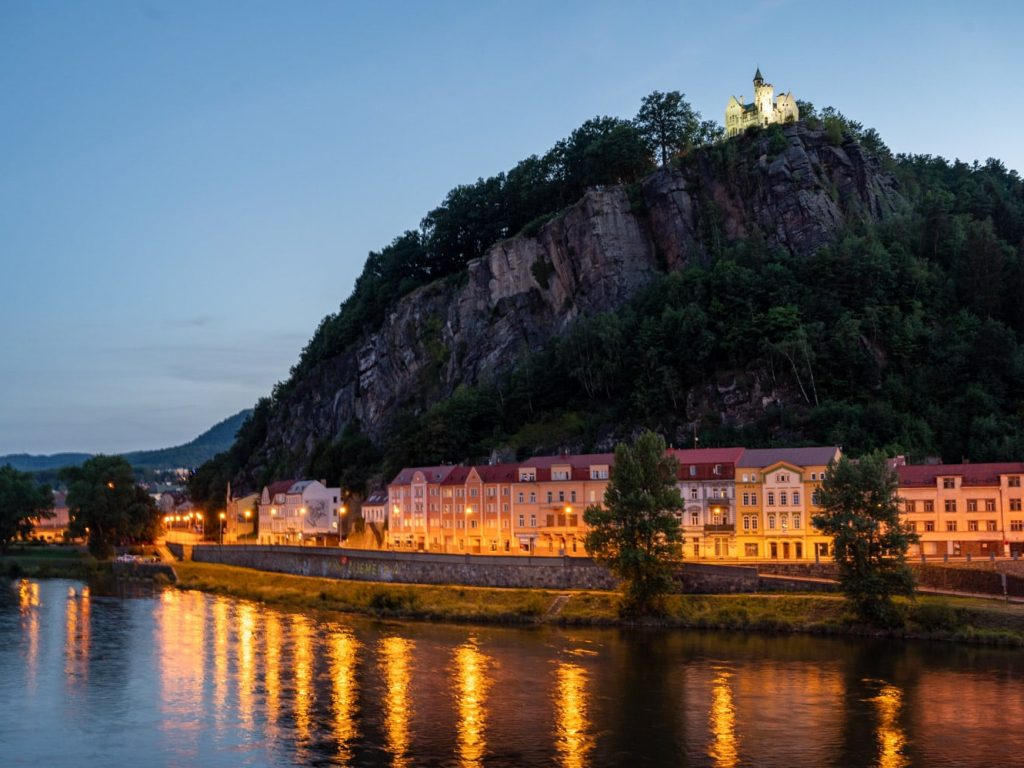
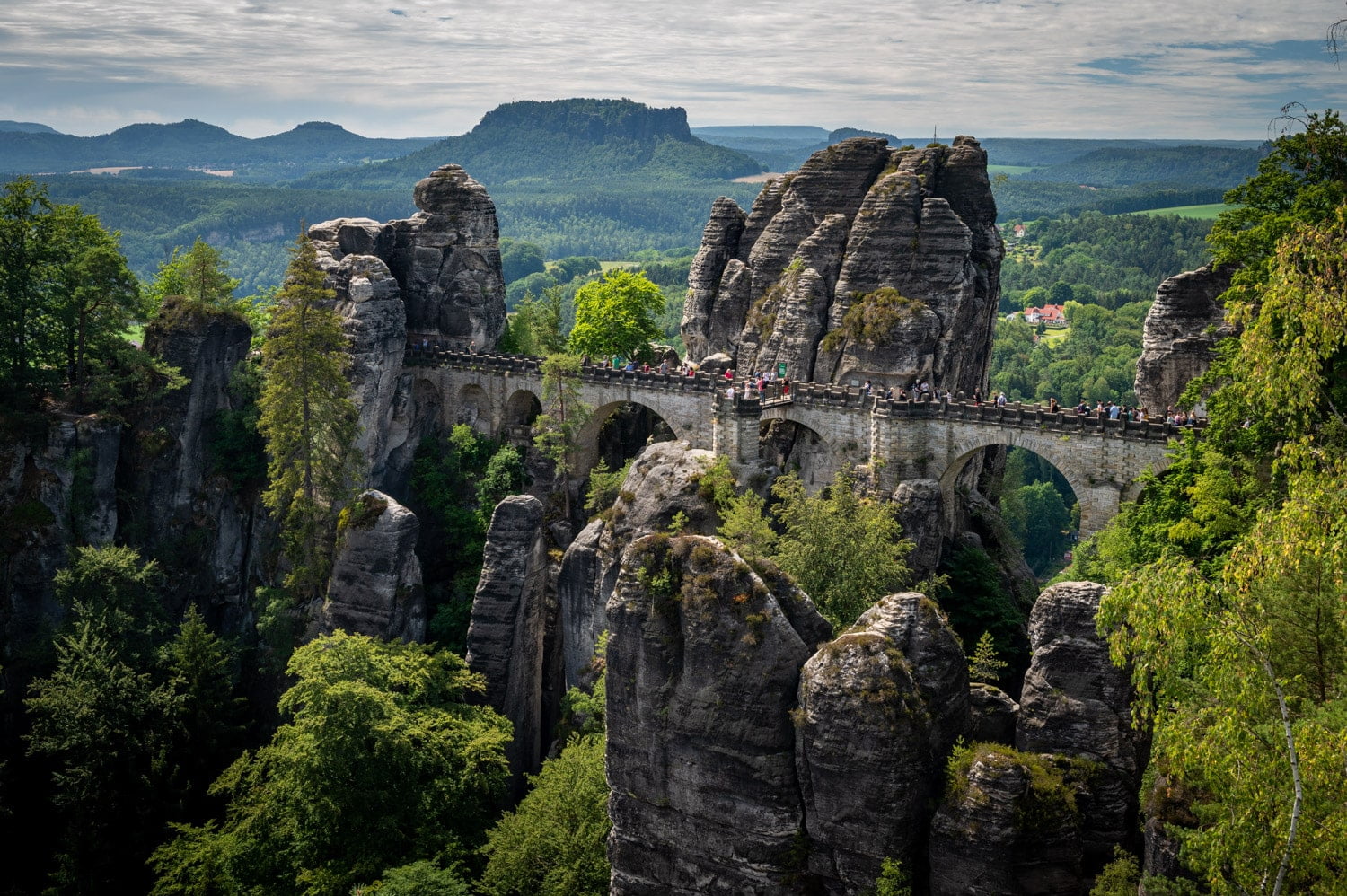


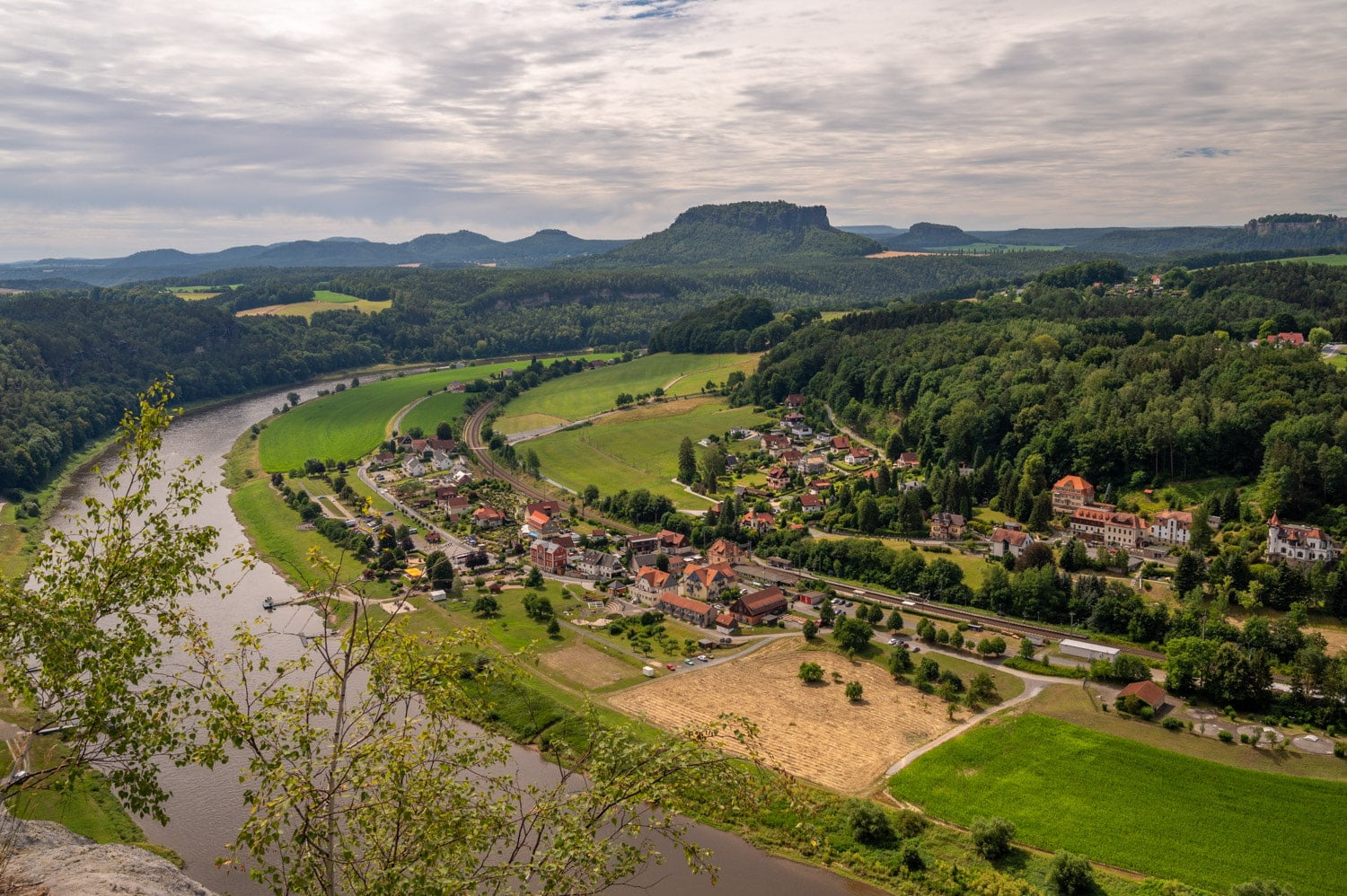
Leave a Reply